
& Where to Go Discover the best lodges, and learn a bunch about fly fishing in the Bahamas Bahamas ISSUE N O. THIRTY NINE 2023 SEASON The Fly Shop® Travel Planner & Destination Guide
When
Amplitude Big Water Taper








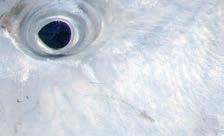


“When it’s time to lock up and hold on, I run SA’s Amplitude Big Water Taper. With 100-lb. monofilament core, nothing gives me a better chance with the reef and an angry Giant Trevally.”
 - Josh Hutchins, SA Ambassador
- Josh Hutchins, SA Ambassador
Featuring aST plus for superior slickness and 2½ TIMES MORE DURABILITY THAN CLOS COMPETITO








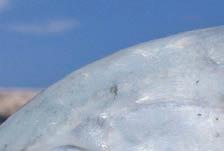
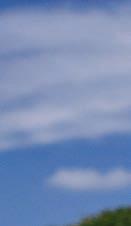







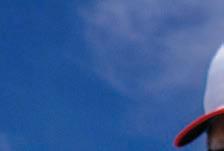
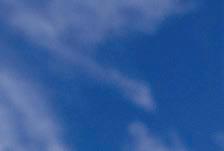

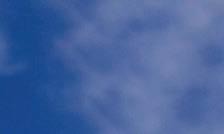

• Specially designed for tropical environments






















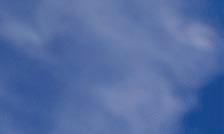


• Features the revolutionary AST Plus slickness additive for superior shooting ability and increased durability

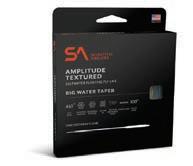
• High-contrast sighter to identify the back of the line when fighting fish on long runs






• One size heavy to load quickly and deliver the biggest flies to the furthest targets

• Built on a 100-lb. core

Bahamas!



PULLED BY THE falling tide, turquoise water moves slowly over white sand flats. Dotted with coral and mangroves, cut by channels of emerald green water, these flats of dreams seem to stretch all the way to the horizon. Reflecting sunlight, a silver tail shimmers on the water’s surface.



Beginning fifty miles off the south coast of Florida and encompassing 180,000 square miles of islands and ocean, the Bahamas is a fly fisher’s dream. Warm Gulf Stream waters and low latitude give the islands a mild and seemingly winterless climate, averaging three hundred and ten days of sunshine each year. Grand Bahama and Abaco are the northernmost islands, and Great Inagua is the furthest south. Between them rests hundreds of islands and cays, many surrounded by extensive white sand flats that extend for miles.

Fishing has long been an integral part of the Bahamian lifestyle, and for no small reason. Referred to as the Baja Mar, or Shallow Sea by the Spaniards, it is one of the most spectacular saltwater fisheries in the world. Hundreds of tropical islands are embraced by shallow flats and mangrove-lined beaches. This estuarine environment is home to bonefish, permit, tarpon, mutton snapper, barracuda, blacktip sharks, and more. Almost one hundred different species of coral decorate the surrounding ocean floor with an infinite variety of shapes, sizes and colors. Tree-sized forests of stone-hard elk horns; huge boulders that look like
giant brains; and delicate, flower-like figures of lettuce and leaf corals abound in Bahamian waters. These nutrient-rich shallows drop rapidly into the cobalt ocean depths. Just a few miles east of Abaco is the Great Abaco Canyon, a nearly vertical formation of rocky cliffs and sedimentcovered slopes. Depths range from roughly 5,000 to 11,000 feet. Forage species abound along these slopes and steep walls, attracting dolphin, tuna, wahoo, and marlin. Inshore reefs harbor a huge variety of gamefish, including Nassau, strawberry, red and black grouper; mutton, schoolmaster, and mangrove snapper; yellowtail and horse-eye jacks; and king and cero mackerel.
The Bahamas has been the playground of eastern seaboard saltwater fly fishers for decades and there is no saltwater international fly fishing destination easier to get to from the States. It’s been the favorite bonefish spot of The Fly Shop® for over 40 years. This magazine is dedicated exclusively to the Bahamas – enjoy…

This magazine is dedicated to helping you spot the right place in the
At last count, the Bahamas has over 76 lodges and several hundred independent guides. The choices are staggering. The Fly Shop® is here to help make sure the experience you choose is the right fit. Put 40-plus years of experience to work for you
Matt Jones photo
www.theflyshop.com s phone 800-669-3474 3
To travel is to experience emotions.
The Bahamas is back!
The devastation of Hurricane Dorian in 2019 followed by two years of COVID-19 restrictions brought the Bahamas to its knees. This tiny Caribbean nation came roaring back in 2022 and we could not be happier.
THIS NEW MAGAZINE is our second edition dedicated exclusively to fly fishing in the Bahamas. The Bahamas is arguably one of the greatest saltwater fly fishing destinations in the world and still, after six decades of angling history, remains the “King” of bonefishing. Yet the Bahamas offer so much more than just bonefishing; It’s a multispecies destination offering legitimate shots at permit, tarpon, mutton snapper, barracuda, triggerfish and more…
Steeped in angling history, the Bahamas was home to one of the first dedicated fishing lodges – Deep Water Cay Club at the east end of Grand Bahama Island – and today this island nation boasts more than 76 lodges that cater almost exclusively to anglers. Only 50 miles off the coast of southern Florida, the Bahamas consists of 700 islands and 2,400 cays. From the island of New Providence where the tourist metropolis of Nassau resides, south to the sleepy islands of Crooked and Acklins, and east to the most distant island of Mayaguana, the Bahamas has a little bit of everything for those looking for a tropical island holiday that is easy to access from the States. But for the folks here at The Fly Shop® who been traveling to and exploring this saltwater fly fishing Mecca for over 40 years, it’s the aqua-blue waters, warm friendly people, island culture and white sand flats teeming with bonefish, permit, ‘cudas and more that keep us coming back, year after year.
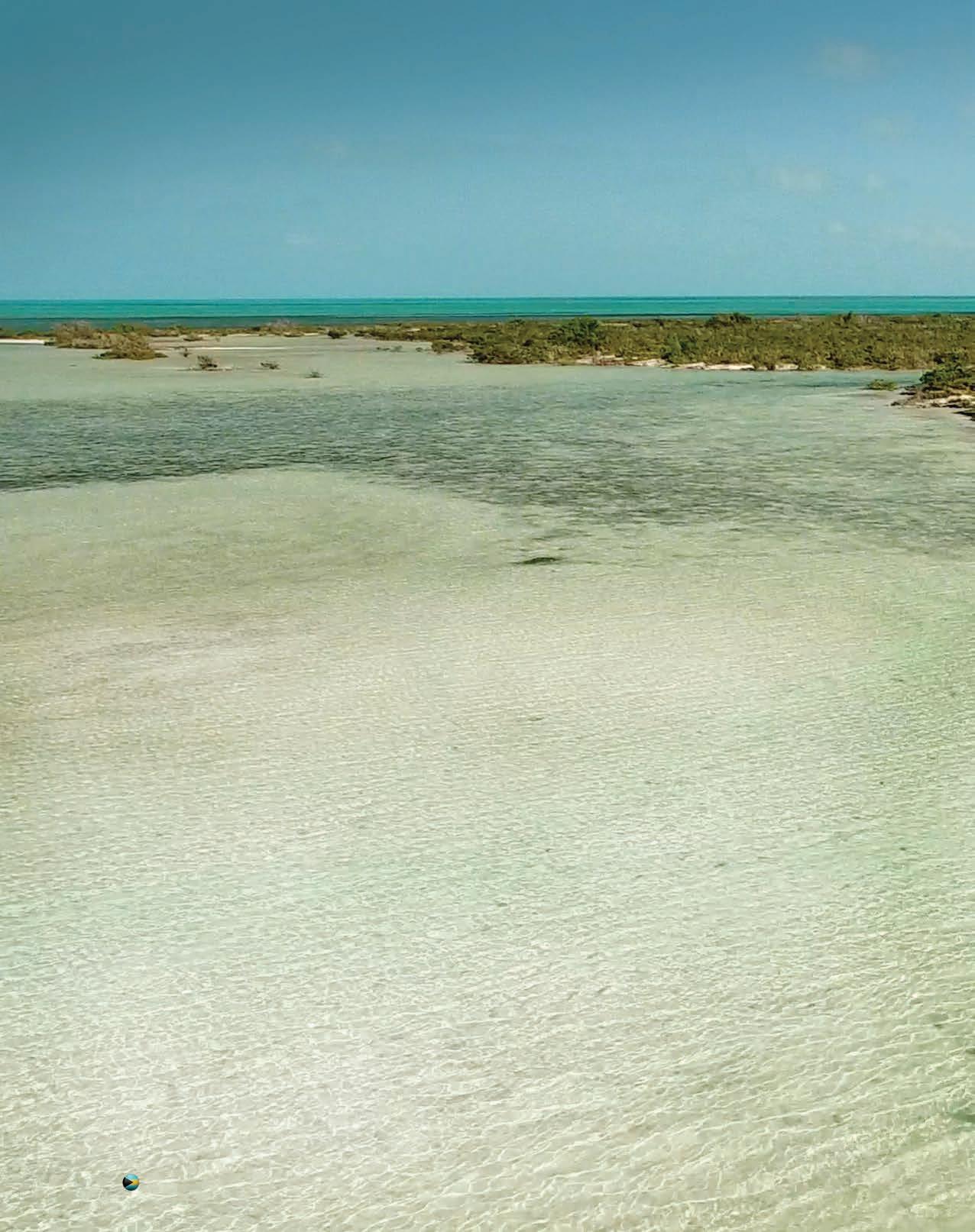
If you’d like to learn more about the fly fishing opportunities in the Bahamas – pricing, availability, tackle and gear, or other details – just give us a call at 800-669-3474. We’re the experts and we’re here to help!
COVID update:
As of 20 September 2022, the COVID-19 testing requirement for entering The Bahamas has been eliminated. All travelers, regardless of vaccination status, are no longer required to submit to pre-travel COVID-19 testing to enter the country.
For more information about COVID-19 requirements and the re-opening of the Bahamas, you can visit their website at:
https://www.bahamas.com/travelupdates


4 www.theflyshop.com s email: info@theflyshop.com
Or scan this code for the info.

www.theflyshop.com s phone 800-669-3474 5 If you’d like to learn more about the Bahama’s bonefishing opportunities, pricing, availability, or other details, just give us a call. We’re the experts and we’re here to help! Pat Pendergast, Director of International Travel The Fly Shop® International Travel pat@theflyshop.com We’ll help you journey to all the right places!
Herle Hamon photo
THE FLY SHOP ’ S SELECTION OF BAHAMA FLY FISHING LODGES
Abaco Lodge Page 56
Newly rebuilt in the spring of 2023 on Abaco Island offering direct access to the famous “Marls of Abaco”
Andros Island Bonefish Club Page 38
There are nearly 1,000 square miles of flats surrounding Andros Island.

Andros South Lodge Page 30
With access to the remote “West Side” of Andros in brand new Hells Bay Skiffs, and single occupancy lodging, serious anglers should have a look.
Bair’s Lodge Page 36
Bair's Lodge is situated on the east side of South Andros, between Deep Creek and Little Creek.
Crooked & Acklins Trophy Lodge Page 47
These shallow, firm wading flats are home to abundant schools of bonefish averaging three to four pounds, and permit!
The Delphi Club Page 60
The fabled Marls on the west side of Abaco offer more than 200 square miles of backcountry bone fishing flats, just minutes from the lodge.
East End Lodge Page 20
East End Lodge is located at the far eastern end of Grand Bahama Island
H2O Bonefishing Page 10
First and foremost, H2O Bonefishing is about flats fishing for bonefish.
Joulters Fly Fishing Adventures Page 42
Located on the far northern tip of Andros Island, allowing the best access to the remote, pristine, endless miles of hard white sand flats known as the Joulters.
Little Abaco Bonefish Lodge Page 58
Located in the fishing village of Crown Haven on Little Abaco Island. Bonefish, barracuda, and sometimes permit and tarpon can be found here.
Mangrove Cay Club Page 28
Lovely cottages, high level of service, amazing food, and some of the finest bonefishing on the island.
Mars Bay Bonefish Lodge Page 32
Mars Bay is at the southern end of Andros, and has the closest access to miles of hard sand flats, where schools of bonefish roam.
North Riding Point Club Page 14
North Riding Point Club is located on 6 acres of pristine, beach-front property on the southern shore of Grand Bahama
Soul Fly Fishing Lodge Page 52
This new lodge finally allows anglers a chance to fish the hallowed flats of the famed Berry Islands. miles of hard white sand flats known as the Joulters.
Swain’s Cay Lodge Page 40
A true escape to peace and tranquility situated on a pristine white sand beach laced with swaying coconut palms and gin-clear water.
6 www.theflyshop.com s email: info@theflyshop.com
5 5 Florida Cuba 2 2 3 3 4 4 6 7 7 8 8 10 9 11 12 13 13 11 14 14 9 15 15 6 Great Bahama Bank Little Bahama Bank Tongue of the Ocean Straits of Florida nassau ● ● andros town ● congo town ● marsh harbour nicholls town ● ● george town ● freeport 10 1 1 12 Grand Bahama Great Abaco Eleuthera Great Exuma Cat Island San Salvador Rum Cay Long Island Ragged Island Crooked Island Bimini Island Berry Islands Acklins Islands Andros New Providence ● ● ● ● ● ● ●
The Bahamas has it all!
When it comes to spectacular bonefishing opportunities, outstanding lodges, skilled guides, and a wide range of flats experiences tailored for both experts and beginners, the Bahamas sets the standard.
WHEN CHRISTOPHER COLUMBUS
set foot on the tiny island of San Salvador in 1492 he was glad to see terra firma . He knew where he’d been, but not where he was. Chris sailed away from the Bahamas in search of where he wanted to be, the West Indies (Spice Islands) without knowing the globe was bigger around than he thought, and that he hadn’t a prayer in hell of ever hitting his target.
Fast forward five centuries and you’ll find that the spice in the lives of many modern day saltwater fly rodders is bonefish, and the Bahamas is the most reliable spot on Earth to find them.
The Bahama archipelago is an ecological oasis sprinkled over 100,000 square miles of shallow sea, with more than 700 islands and over 2,400 islets and cays (only about 30 of which are inhabited).
The flats of the Bahamas appear to have been custom-tailored by Mother Nature for fly fishermen, and the fishable area of the Bahamas dwarfs the combined size of all of the flats of Belize, Honduras, and the entire Mexican Yucatan.
Too, there is very little argument among experienced anglers that the chance to land a true trophy bonefish (8 - 10 pounds) is probably better on the flats that surround Grand Bahama Island or Andros than any other saltwater destination in the western hemisphere.
There are fewer footprints in the sands of the “Out Islands” and the more isolated and difficult to reach locations include larger numbers of less sophisticated bonefish.
The Fly Shop® doesn’t pretend, or try to be all things to all anglers, and our portfolio of Bahamas destinations includes only what we’ve found to be the top-rated lodges in the Caribbean island nation.
Add to this that few great fly fishing destinations beyond our coastal borders are easier to reach. There are convenient daily flights and regularly scheduled charters from Florida, New York, and the eastern seaboard directly to the main Bahama islands. Quite a few of the lodges featured in this magazine can be reached in a single day from nearly anyplace in the lower forty-eight states, and many returning travelers clear U.S. Customs and Immigration while in Freeport or Nassau, and hit the ground running in the States. No lines; no waiting; no hassle.

Also featured in this issue
Timing your trip to the Bahamas Page 26
We’ve been fishing the Bahamas for over 40 years. We know the right times, moon phases and tides to target in the Bahamas. Put that experience to work for you.
Spotting fish on the flats Page 13
Sight fishing for bonefish is the ultimate hunt with a fly rod. We’ll give you tips on how to spot the gray ghost of the flats
Gearing Up Page 54
The Fly Shop® has been outfitting bonefishers around that world for forty plus years and knows what gear you need to be successful.
Wading Tactics Page 52
Wading a skinny water flat, and sight fishing for bonefish is what it is all about. We’ll share our tested wading tactics to ensure your success.
Dressing for the flats Page 42
Wearing the proper flats fishing garb makes a difference – in comfort, sun protection and being a successful bonefisher.
Bonefish and Tides Page 16
There’s something in the Bahamas for everyone. Serious, hard-core fly fishermen can find just the kind of action they’re after, while anglers new to the saltwater, or anglers traveling with their family or non-fishing companions have several choices that will put a smile on everyone’s face.
It’s true that Bahamian bonefish aren’t as big as those found in the Florida Keys. But, on the average, they’re good-sized fish, far more easily caught, and found in far greater numbers in the Bahamas than Florida.
The Fly Shop® doesn’t pretend, or try to be all things to all anglers. The portfolio of toptier Bahamas lodges in this magazine only includes those time-tested destinations we’ve visited and that have proven to be up to the most discriminating standards — ours.
- Mike Michalak
Mike Michalak is the proud owner of The Fly Shop®. He began fly fishing the salt and took his first bonefishing trip to the Bahamas in 1978, soon after expanding the famous retail store to include what has since become one of the largest fly fishing travel companies in the sport.
The Fly Shop® has been instrumental in the development of a number of the most popular fresh and saltwater lodges in the world of fly fishing.
The rise and fall of the tide determines where a bonefish can safely avoid predators and feed in comfort. Understanding this dynamic rhythm will put you in the right place and time to connect with the gray ghost.
Teamwork in the skiff Page 60
You and your guide are a team and with a little pre-fish tune up on expectations and communication, you will function together like a well oiled machine.
The right spot to take your family or spouse Page 62
Family vacations to a warm tropical paradise in the Bahamas will keep the entire family entertained, happy and forge strong memories that last a lifetime
Choosing the right fly Page 66
Just like choosing the right fishery, guide, moon and tide phases, having a selection of the proper flies for the Bahamas is critical to making your trip successful. These are our favorite patterns.
Cover
Lone guide on poling platform against a vanishing horizon. Photo: Little Abaco Bonefish Lodge.
www.theflyshop.com s phone 800-669-3474 7
Eric Ersch photo
Grand Bahama Island
Where bonefishing in the Bahamas began
Considered more than half a century ago to be one of the finest bonefishing haunts on earth, the east end of Grand Bahama was the logical location for one of the first bonefishing resorts in the Bahamas, the Deep Water Cay Club. And it was a club in every sense of the word. Guest privileges were limited, and it was considered an honor to be invited to fish there.
The reason for their choice of location?
THE FLATS SURROUNDING the east end were perfect for fly fishing and light tackle spin fishing. Years ago, Hurricane Dorian destroyed the Deep Water Cay Club, but the surrounding flats quickly recovered, and the fishing continues to be world class.
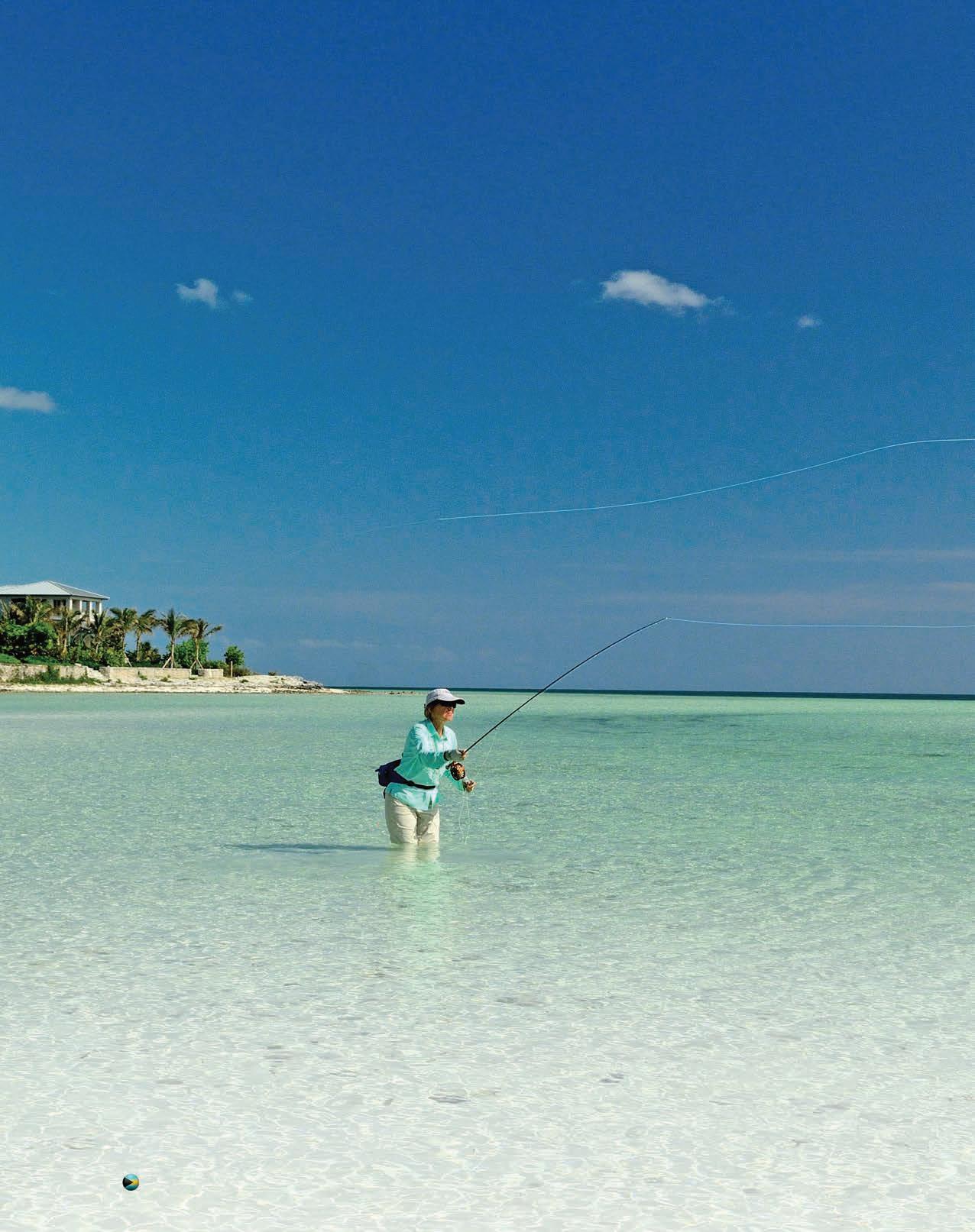
The open water separating McClane’s Town on the east end from Abaco to the northeast, is roughly 20 miles. Passage between the islands is both a sailor’s nightmare and an angler’s dream, with few spots more than 25 feet deep. The shallow shelf that surrounds nearly

all of the north side of Grand Bahama Island is ideal bonefish habitat, and those points where the flats fall off into deep blue water constantly replenish mile after mile of picture perfect, shallow flats with what seems like a never-ending supply of healthy bonefish.
Freeport, Grand Bahama, is less than 90 miles from West Palm Beach, Florida. It has an ultra-modern, international airport and is easy to access from the States. Most East Coast residents can put in a full day of work and still arrive on one of the evening flights scheduled
8 www.theflyshop.com s email: info@theflyshop.com
BAHAMA
GRAND
every day of the week. Even those of us out West and in the Rockies can usually make it to Freeport in a single travel day.
There are two outstanding bonefish lodges on the island, and a fine luxury resort that does a terrific job of catering to fly fishermen. Grand Bahama is a spectacular destination for traveling anglers and their families, and the fish are waiting.

Grand Bahama came into view below the left wing of the jet as we dropped altitude and began our final approach to Freeport.
It was stunning. There were clear, white sand flats that seemed to stretch along the entire island shoreline and across to Abaco. The water was calm and there wasn’t a boat or angler in sight.
John Randolph Editor emeritus Fly Fisherman Magazine
www.theflyshop.com s phone 800-669-3474 9
Photo courtesy of Deep Water Cay Club
East End Lodge
Veteran anglers often agree that the east end of Grand Bahama Island is one of the top flats fishing locations in the Caribbean, and East End Lodge is one of the best operations in the Bahamas.


The guides are top notch, the food and accommodations are terrific, the location is spot on, and the fishing can’t be beat.
DESIGNED FOR serious flats fisherman, East End Lodge has spent the last decade building a stellar reputation among hard-core anglers in search of a top-quality destination, with access to the bonefishing that made the east end of Grand Bahama famous.
East End guides are seasoned professionals. Most are multi-generation professionals, who have been surrounded by the fly fishing ethic since birth. They usually show up early, and stay late. They pack their 16´ Dolphin Super skiffs full of “can do” attitude, and push them with modern Yamaha outboard motors. These are skilled watermen who know every flat and channel on the east end like the back of their hand, and you can count on them to work hard and do their best to deliver a full day of action-packed fishing.
The eastern portion of Grand Bahama is called “the horn”, bisected by five large bights traveling northeast to southwest. The common trade winds are easterlies, and the direction of the bights offers protection from the winds. Perhaps more important, the geography of the bights and the surrounding flats enable the guides to fish optimal tides throughout the day.
Guests at the ultra-comfortable beachfront lodge enjoy a large, comfortable bar and spacious dining room where local Bahamian favorites highlight the menu each night . Fresh seafood, cracked conch, lobster, fresh fish, chicken, pork, salads, homemade soups, a variety of side dishes, and locally grown produce are everyday fare.
The guest cottages are a short cast from the water’s edge and house four double rooms and six single premium rooms which accommodate a maximum of fourteen anglers. They’re comfortable, spacious, and kept immaculate. Each suite is outfitted with two queen size beds, tile floors, private baths with granite counters, dark native hardwood vanities, and a large walk-in shower. The only spot better suited to enjoying the cool evening breeze and a cold Kalik than the full length cottage porch might be the casual, palm frond-covered “Sand Bar” where anglers gather at the end of each day to reminisce about the day’s successes and failures.
10 www.theflyshop.com s email: info@theflyshop.com
GRAND BAHAMA ISLAND
East End Lodge photos
Travel is easy to Freeport and East End Lodge is an attractive destination for quick two and three-day trips for mid-American and East Coast anglers, as well as week-long fly fishing holidays at the best price point on the island.

In a nutshell, at East End Lodge you can expect to routinely cast to large bonefish and get shots at permit with an experienced guide staff, returning each day to great food, a full bar, and spacious air-conditioned rooms overlooking the water. Everything but your bar bill and gratuity, including the transfer from Freeport, is included in the package.
If you want to treat yourself to a super bonefish trip and get a lot of bang out of your buck, then seriously consider fishing with East End Lodge. Please give us a call, and plan on a spectacular Bahamian fly fishing holiday.
s 7 night/6 day double occ angling packages $5,935 Stays can be tailored for as many nights as requested.
www.theflyshop.com s phone 800-669-3474 11

4 tips for BonefishSpotting
1. Look for movement
When you first notice a bonefish, it’s unlikely you will actually see a clear outline of the fish. Bonefish generally first appear as dark shapes, moving slowly and steadily. They’re almost always in motion, so keep scanning the flat for dark moving shapes. Ripples on the water and the movement of your boat (if you’re poling) can sometimes make it difficult to tell if that dark shape is actually moving. If you see a shape that might be a bonefish, find another nearby object on the bottom to use as a reference point, and compare the ‘movement’ of the shape against that object. Once you have decided that the shape is a bonefish, do all that you can not to take your eyes off of the fish. If you look away it can be time-consuming to find it again, and that may cost you the shot.
2. Look where you can see
This may seem obvious, but you should spend most of your time looking in the direction that you can see. The angle of the sun and the color of the bottom will make for better visibility in one direction and one area – look there! If you can’t see well 100 feet out, look 50 feet out. Focus on the bottom near the boat and slowly raise your field of vision. You can also divide your field of view into quadrants and constantly scan those sections in a repeated organized manner. A periodic quick scan of areas with tough visibility never hurts, but most of the time you should systematically search the areas where you can see well. Don’t waste your time looking where you can’t see and don’t space out…“total concentration, grasshopper!”
3. Pay attention to the mud
Look at the color of the sand or marl being kicked up by the guide’s pole, or the bottom you are disturbing as you wade. Excavated bottom created by a feeding bonefish w ill often appear as a series of small dark spots on a lighter colored bottom. It’ll help you recognize the location of actively feeding fish, and their direction of travel.

4 . If you can’t see the bottom, look at the surface
If clouds and/or glare prevent you from seeing the bottom, look at the surface of the water. V-wakes, nervous water (best defined as a disturbance on the water surface that is against the natural flow) and certainly tails and/or fins could indicate the presence of bonefish. Cloudy but calm days can actually produce some fantastic fishing if you learn to look for movement on the water rather than trying to look in the water.
www.theflyshop.com s phone 800-669-3474 13
Andros South photo
North Riding Point Club
This luxury lodge rates as one of the great trophy bonefishing resorts on Grand Bahama. Anglers spend their time in seclusion on the legendary flats surrounding the island, which rate as among the most beautiful and productive in the world of bonefishing. Bonefish here are very large on average, with an occasional shot at a true monster!

EED DAWES managed the Deep Water Cay Club for decades. He left the east end of Grand Bahama in the mid 90’s, taking with him a wealth of accumulated knowledge and the pirated core of his former employer’s guide and kitchen staff. Then, armed with what may have been the most skilled team of flats professionals ever assembled, he set out with a group of investors to set a new standard in saltwater angling resorts.
North Riding Point chose as its new location a spectacular beach roughly midway between McLean’s Town and Freeport. Every facet of the lodge – the location, the staff, and the services – was designed to meet the needs of sophisticated traveling anglers searching for a top quality flats experience. And when it opened in 1996, North Riding Point Club fulfilled its grand promise to become the “Rolls Royce” of bonefish lodges.
14 www.theflyshop.com s email: info@theflyshop.com
BAHAMA
GRAND
North Riding Point Club photo
NORTH RIDING POINT CLUB has large living and dining areas, a beautiful oceanfront veranda, and a first-class tackle and gift shop. Accommodations are duplex cottages, all facing south and overlooking the ocean. Each guest room has two queen beds, a table and chairs, air-conditioning, ceiling fan, full bath, mini-fridge ( stocked with water, beer, and soda ), coffee maker, and a private, screened veranda. A beautiful oceanfront freshwater swimming pool and patio separates the lodge and guest cottages. On the day it opened its doors, North Riding Point Club easily qualified as one of the finest lodges in the sport.
Though deluxe by any standard, the emphasis at North Riding Point Club remains focused on providing outstanding fishing, superb guides, and a creative system to offer its clientele miles upon miles of picture-perfect flats loaded with trophy bonefish. The guides are waiting after breakfast to load their skiffs with gear, ready to trailer to one of the several ramps on the island. Driving time to the launch sites varies from fifteen to thirty minutes, and runs to the flats are typically 10 to 20 minutes. The guides at North Riding Point Club remain among the best in the Bahamas. They are all talented and experienced professionals who understand all of the intricacies of putting fly rodders on fish.
North Riding Point Club has developed access to a huge expanse of seldom-fished flats on the northeast side of Grand Bahama Island and the outer cays which separate the island from Abaco. The area is very shallow with a consistently clear bottom, and harbors incredible numbers of trophy bonefish as well as a sizable population of permit. The majority of the fishing is done from the boat, but a great deal of wading opportunities exist for the angler who prefers that method of flats fishing. The lo dge uses a fleet of Hell’s Bay Marquesa skiffs powered by 90 HP Yamaha outboards, all with padded seats, dry storage lockers, a leaning bar on the casting platform, and cellular communication.
North Riding Point Club is now a well-established flats lodge with more than two decades of experience under its belt providing anglers with world-class fishing and service. There are other wonderful choices to be made in choosing a destination in the Bahamas, but none that are better than North Riding Point Club.
s 7 night/6 day dbl occ angling packages $7,667 Stays can be adjusted for as many nights as requested.

www.theflyshop.com s phone 800-669-3474 15
The Importance of Tides &Moon Phases
TIDES CAN BE extremely important while fishing the shallow seas and understanding them will greatly improve your productivity on the flats. Tides determine the depth of water and the direction that the water is moving on a bonefish flat. Moon phase determines the timing of the tides, with a normal schedule of two lows and two highs during a timespan of 24 hours and 50 minutes. Full and new moons have the greatest effect on the tides, with the highest and lowest tides of the month occurring during these moon phases. These are called the “Spring Tides”. Quarter moons occur between the full and new moons, with much smaller swings between high and low tides. These are called the “Neap Tides”. A full moon cycle takes approximately 4 weeks, so each of these tides will last around a week during the cycle.
Bonefish, as do most all fish, want to spend the least amount of energy to get the greatest amount of food, with the least amount of exposure to predators (namely sharks and barracuda). With a fundamental understanding of these concepts, an angler can predict where and when to effectively fish a flat for bonefish.
Tide Fundamentals

The traditional tide vocabulary can be challenging, so let’s get this lined out from the start. When the tide is incoming, it is referred to as “flooding”. An outgoing tide is referred to as “ebbing”. Then there is a brief period between each peak high and low tide where the water stops moving before changing directions, this is called a “slack tide”. Tides are incoming or outgoing for a period of roughly 6 hours and 12.5 minutes. The timing of a peak high or low tide changes approximately forty five minutes later each day. A full tide cycle then, from low tide to high and then back to low, is about 12 hours and 25 minutes.
Due to the interaction between water, land masses, and the position of the moon and sun, tidal range differs greatly among locations. The Cook Inlet in Alaska has tides that can rise and fall more than twenty feet between a high and low tide! In contrast, Andros Island tides typically vary three feet or less between a high and low tide. In Belize in the fall, during the biggest tidal swings of the year, they vary no more than 18 inches between high and low tide.
There are other factors that affect tidal movement on the flats. Wind speed, direction, and duration can have a significant effect on tides. Strong, sustained onshore winds can create higher tides than predicted, even preventing low tides from occurring. Strong winds may not prevent a tide from occurring, but it can delay the incoming or outgoing tide. A strong onshore wind may lengthen the duration of high slack tide, but eventually the force of the outgoing tide is too great and the water level drops quickly in a short amount of time. If the wind is very strong from one direction for days or weeks, the average water level may become higher with an onshore wind or lower with an offshore wind than normal. This is often evident in a shallow bay or estuary where a large body of water accesses the ocean through a small channel or entrance. When the wind and tide move in the same direction, water movement can be especially strong, attracting bonefish to the edges of flats and around protruding structures where those currents dislodge
prey, making them an available food source. In contrast, when a strong onshore wind or approaching strong low pressure creates higher than expected tides, bonefish have a greater selection of locations and more time to forage on the flats. In this situation, you may want to adjust your search strategy and hunt farther up on the flat than normal.
Barometric pressure can cause the tides and water levels to be different than predicted. During periods of low pressure, there is less atmospheric force pressing down on the water, and overall water levels may be higher. Conversely, when the barometer rises, tides may not be as high as predicted.

Bonefish and Tides
Bonefish establish their daily feeding cycles based on the tides, spending more or less time on the flats in a tradeoff between eating and avoiding predators. This is why bonefish retreat from a flat during low tide but typically don’t stray far. In fact, at slack low tide or the earliest part of the incoming tide, you’ll often find a bonefish or two feeding slowly along a shallow edge of a flat as it drops to deeper water. In contrast, after the tide has been incoming for a while, you’re likely to find more and larger fish moving up onto the flat.
Bonefish follow fairly predictable routes on and off the flats, traveling in small troughs and depressions. Bonefish often favor troughs that are often only a few inches deeper than the surrounding flat, and lead from the deeper edges to the flat’s interior. They have enough water to travel without the threat of sharks or barracuda that need deeper water. These travel routes are sometimes difficult to identify when the flat is flooded, and much easier when the last of the water is draining from the flat. If you’re there on the last of the outgoing tide, make a mental note of these travel troughs, planning your return on the first of the incoming tide at the confluence of the troughs and deeper channels where bonefish will show up first.
Fishing Full and New Moon Tides – The Spring Tides
During extreme low tides, bonefish often hold in deeper channels, waiting for the next incoming tide. In the hour or so on either side of the low tide, stalk the edges of flats, searching for bonefish cruising slowly in slightly deeper water.
When incoming full and new moon high tides flood the shallows, bonefish are quick to take advantage of deeper water and the ability to forage in areas they can’t access on quarter moon tides. Early on the incoming tide and late in the outgoing tide, position yourself along the bonefish travel troughs and you may have brief but intense periods of casting to fish as they move quickly between the flooded backcountry and the deeper channels along the edges of the flats. As the incoming tide continues to rise, plan to move quickly from the deeper edges of the flats, along the travel-troughs, and onto the shallow flats, shorelines, and ridges that are only accessible during peak high tides. Bonefish know these locations hold a lot of prey, and they should be productive places to fish during high tides.
16 www.theflyshop.com s email: info@theflyshop.com
Fishing the Quarter Moon Tides – The Neap Tides
The skinny water where you found tailing fish at high tide last week might not be deep enough to hold fish on a quarter moon high tide. Bonefish may not be willing to travel as far to get to those shallow areas accessible during full and new moon high tides, but they’re more likely to feed longer and more thoroughly as the water is not rising or falling nearly as fast. Edges of flats are always good places to start searching for feeding bonefish during the low tides, especially where those travel-troughs exit the flat into deeper channels. Again, plan to move higher on the flat as the tide rises, watching for bonefish moving in from deeper water to feed.
Feel free to shoot us an email or give us a call 800-669-3474 if you want to discuss tides and moon phases and their effect on fishing the flats of the Bahamas.
Bonefishing Strategy
Now that you understand how and when a bonefish will navigate the flats, depending on the tide, it’s much easier to predict where you should be fishing based on the tide. Tide forecasts are readily available on the internet, and a quick search based on your trip dates and location will give you an excellent overview of the timing of the tides during your trip. Add that information to a view of your fishing area on Google Earth, and it becomes very clear how the water will move on and off the flats, and where you should be fishing at a specific time based on the tide.
Fly Sink Rate
Get it there and “show it to ‘em”!
IMPORTANT CONSIDERATIONS when selecting the best fly for a given situation are typically size, color, silhouette and weight, and not always prioritized in that order. When presenting flies to bonefish, the primary focus should always be to get the fly within their field of vision in a prompt and stealthy manner. In the guide’s words, “show it to ‘em”.
For bonef ish, that field of vi sion is generally on or near the bottom. There are certainly circumstances when b onefish w ill feed throughout the water column, but typically they’re looking down to feed – just look at the way a bonefish’s mouth is positioned. That’s the reason most experienced flats anglers agree that a fly’s weight, and corresponding sink rate, is the most important variable when selecting a fly for b onefish. If they can’t see it, they can’t eat it.

Choosing the weight of a fly relates directly to the depth of the water you are fishing. I like the fly to descend through the water column and be on the bottom in roughly three to five seconds. When your targeted bonefish is feeding in water so shallow that its dorsal fin is in the air, a sparsely dressed fly will be “in the zone” with just the weight of the hook (blind – no eyes). If you’re looking for “tankers” in a couple feet of water, barbell eyes are a good choice.
My bonefish travel box has a selection of flies from size two down to a number six. Varied weighting is accomplished by using none or plastic eyes, bead chain eyes, and barbell eyes. Most are sparsely dressed, so I have a general idea of the sink rate when I tie it onto my tippet. The final check is to have it thoroughly wet, and drop it into the water that you’re fishing on a slack leader. “One thousand one, one thousand two, one thousand three, and… done. It’s on the bottom. Perfect.”
Eric Ersch Saltwater Travel Sales Specialist ersch@theflyshop.com
www.theflyshop.co m s phone 800-669-3474 17
Adam Barker photo
Mangrove Cay Club photo
Tips: Casting, Strip Setting
The best thing you can do to prepare for your upcoming bonefishing trip is to practice your casting.
THE ACCURACY OF your cast is far more important than distance. Speed of re-casting is also very important as saltwater fish tend to move quickly across the flats. If you have an accurate 40-foot cast and can pick that fly up and re-cast (for example, from 12 o’clock to 10 o’clock to get in front of a moving school of fish), this is far better and will hook more fish than a wild 80-foot cast.
Your guides are there not only to get you into fish but to help make your fishing trip go as smoothly as possible. They are well-versed in fly fishing and know their fishing grounds. Some guides tend to be a bit more shy than others and don’t want to be presumptuous, so if you need something, let them know. If you need help with your casting, most guides are experienced in fly casting and fly fishing tackle and are happy to help. The guides will also make fly recommendations, rig rods, tie knots, etc.
When fishing, you are on the bow of the skiff and the guide is normally on the poling platform at the stern. Guides use the “clock” system and distance measurements in feet to help you locate fish. They will call this out every time they see a fish, so that you know where to look and cast.
Here is a breakdown of this guide/angler interaction:

s If you are standing on the bow, facing forward on the skiff, the point of the bow is always 12 o’clock, ALWAYS. If your feet move, the bow is still at 12 o’clock, not the direction that your feet are facing!

s 90° to the right is 3 o’clock




s 90° to the left is 9 o’clock.


s For distance measurements, your fly rod is a good reference at 9´ long.
You and your guide should go over all of this before fishing, so that both of you are in sync with the casting clock and distances. Before you start poling a flat, show your guide your longest cast, medium cast and short cast. Now he will know your casting abilities. Ask him how far each cast was, so then both of you will know what he means when he calls out a bonefish at 40 feet at 10 o’clock.
After you cast, let the f ly sink to the bottom, and make your first strips long and slow to get the fish’s attention. Now you are going to “read the fish” by observing its behavior. If it moves quickly to your fly and stops, it probably ate your fly. Make a long strip to set the hook. If there is no resistance, stop, let the fly sink, and begin stripping again. If you do feel resistance, pull on your line to set the hook without lifting your rod, and prepare to “clear your line” as the fish runs. The first run often takes all the line quickly off the deck or water surface, and it is important that you guide the free line back onto the reel as it engages. Your drag has been pre-set, so hold your rod tip high and enjoy the run! Occasionally the fish will turn and run towards you. If you can’t reel or strip fast enough to keep a tight line, put your rod tip into
the water and the drag of the fish pulling the line through the water will keep tension on the hook.

Bonefish have tough mouths and having sharp hooks is important. Check your hook point regularly by pulling it across your thumbnail. If it digs into your nail, it’s sharp. If it drags across your nail without sticking, it’s time to sharpen the point or change the fly. Be certain to pinch down the barbs on your hooks. This makes it easier to release fish with minimal handling, and it also minimizes the risk of injury to the fish, to yourself, and to others.
Now you have successfully spotted, stalked, hooked, and released your first bonefish. The best thing about it is that you get to do it again and again!
18 email: info@theflyshop.com
Dan Armstrong photo
HOW TO
From Alaska to Bolivia, Global Rescue and The Fly Shop® have proudly worked together for over a decade to make sure even the most adventurous fly fishers get home safe.


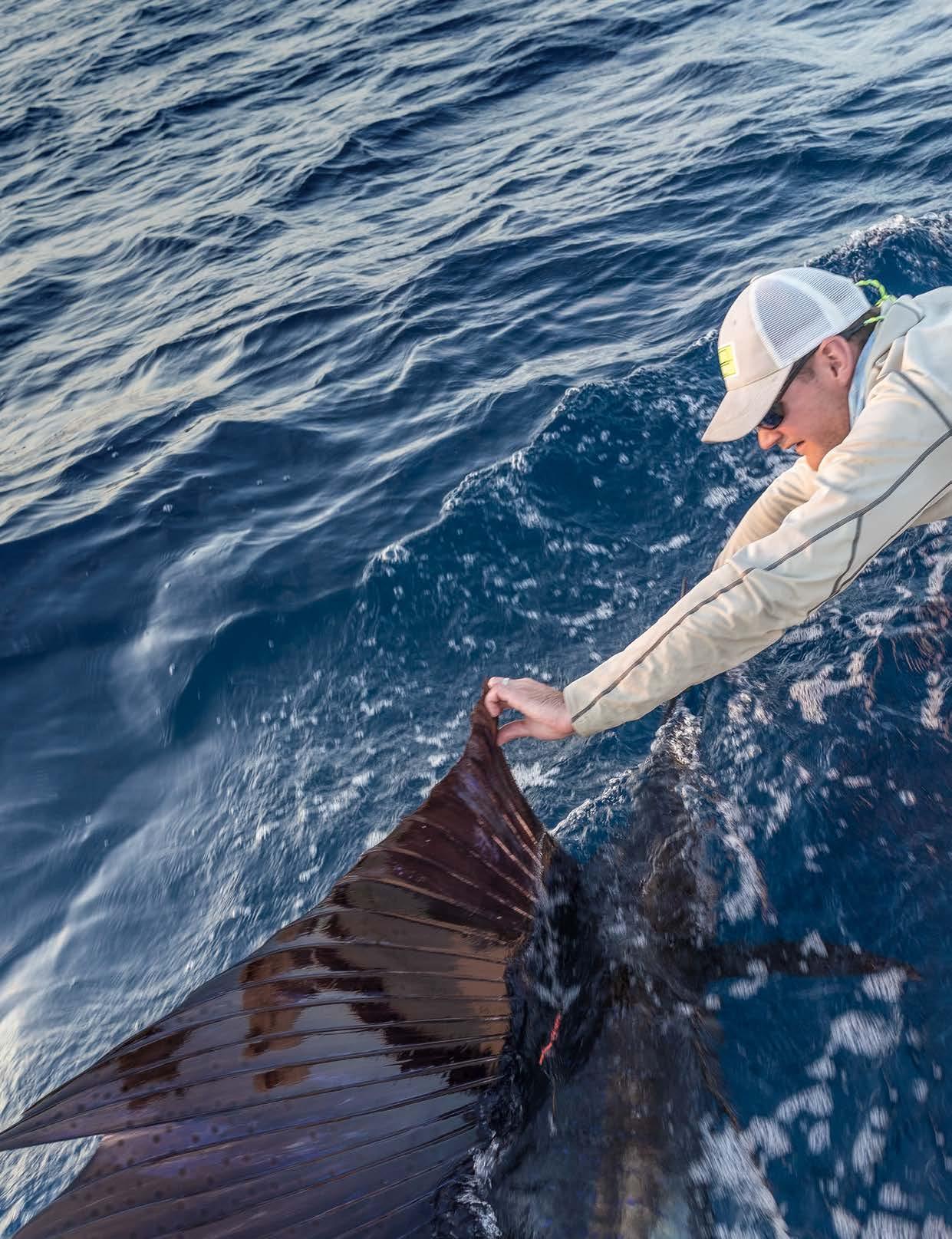
H2O Bonefishing
H 2O Bonefishing offers superb angling for large bonefish on a vast network of flats coupled with excellent guides, top-tier skiffs and a well-appointed resort location with packages that can be customized to your schedule, priorities and interests!
THIS OUTSTANDING destination is owned and operated by the multi-talented and all around good guy, Jason Franklin, an expat from the UK, whose hands-on involvement in every aspect of your bonefish holiday ensures an enjoyable trip. Guides meet their
anglers at the resort each morning after breakfast. These seasoned, native fly fishing experts can quickly trailer to more than 60 miles of seldom-fished shoreline (West End to Halls Point). Though the island of Freeport is easy to get to, its northern shoreline sees less pressure than most “remote” spots in the Out Islands. In fact, this part of Grand Bahama has the second-largest unbroken stretch of mangroves in the Bahamas (only the West Side of Andros is longer). And while other spots lay understandable claims to big fish, recent fishery research has documented that the rugged, mangrove-lined, north shore of Grand Bahama is home to the largest number of true trophysized (8 pounds +) bonefish in all of the Bahamas.
The professionals at H2O Bonefishing deliver more than just stellar guides and great bonefishing. Their basic package includes guide service, breakfast, lunch, and very nice resort accommodations that can be upgraded to luxurious, or modified to match the needs of anglers who are traveling with non-fishing friends or family. It’s perfect, too, for couples on holiday.

The modern fleet of tunnel hull skiffs at H2O Bonefishing are specifically designed for maneuvering swiftly, and silently poling in shallow water. Much of the Grand Bahama experience is done in shallow water, out of poled skiffs, or on foot, covering white sand flats, assisted by sharp-eyed guides. Stalking a large bonefish in only inches of water, watching as that trophy tips down on your fly, feels the hook and explodes toward blue water is an incredibly exciting and rewarding experience.
H2O Bonefishing, located in Freeport, is very easy to get to from anywhere in the USA! Daily jet flights arrive as late as midnight from many stateside hubs. There’s no need to overnight or waste time at airports on the way to this bonefishing Mecca.
20
H2O Bonefish photo
FREEPORT , GRAND BAHAMA ISLAND
fly fishermen on Grand Bahama Island and the most popular aprés angling rendezvous spot in the Bahamas!
Anglers interested in testing their skills against tarpon, jacks, permit, and other species may opt to travel to the remote Little Bahama Bank in H2O’s specialized 21´ hybrid skiff/bay boat which is more appropriate for speed and deeper water.
s Space at Pelican Bay Resort is not limited, and packages can be modified to share (or not share) guides and accommodations, or upgrade lodging.
s It’s the perfect spot for a single angler, or a couple of anglers who want to share a boat and guide and bring along their wives or girlfriends.
s Guests are free each evening to dine at the resort or walk to the nearby Freeport Straw Market where they’ll find a variety of restaurants, lively bars, a casino, and an evening of entertainment.
s Anglers may choose a day or two off from flats fishing to relax, SCUBA dive, snorkel, swim with dolphins, or play at one of several nearby golf courses.
s It’s a super destination for the whole family – with lots of fun things for them to do at the resort or on the island while the anglers are out fishing.
s 7 night/6 day dbl occ angling package $4,395 Stays can be tailored for as many nights as requested.
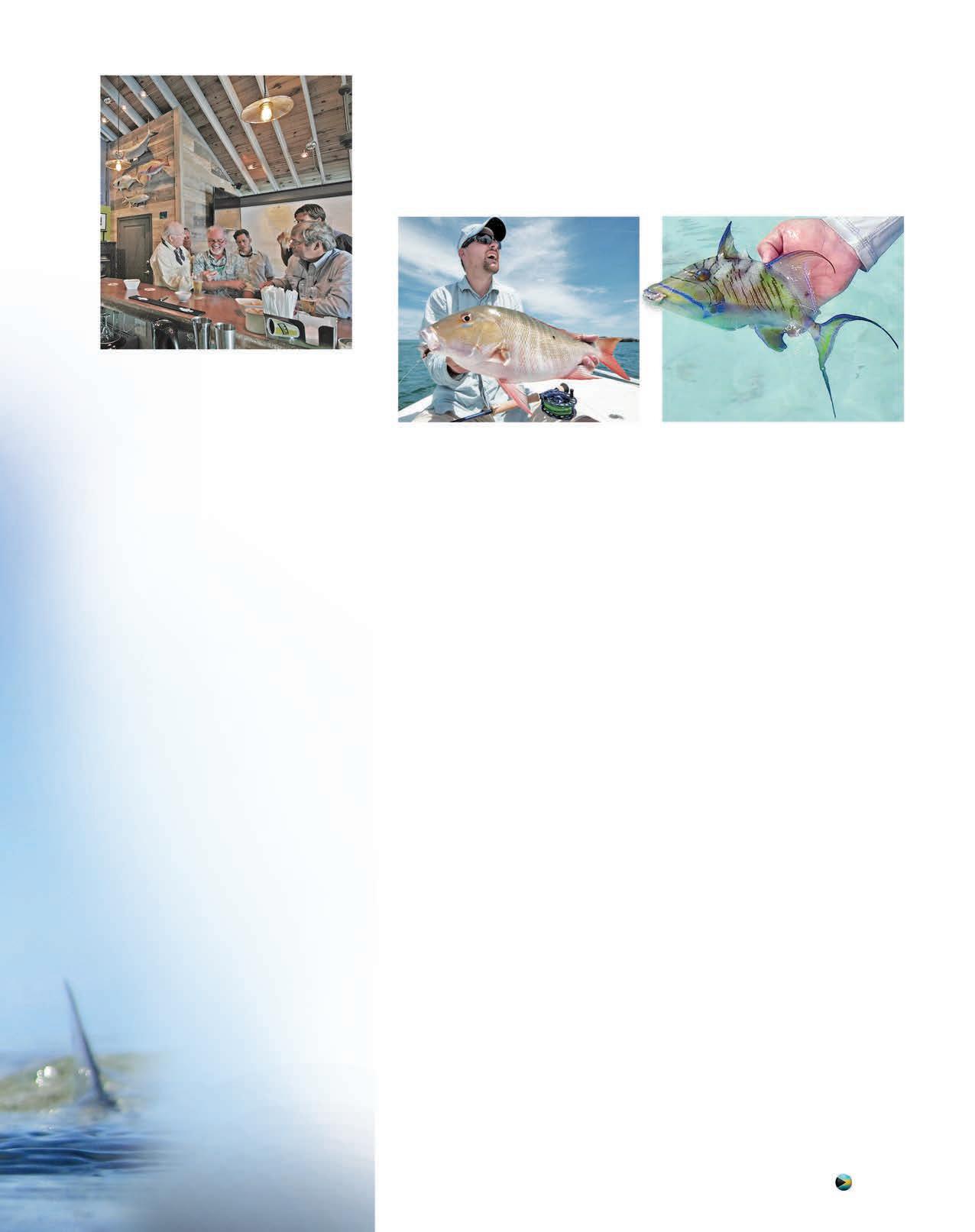
Mutton Snapper & Queen Triggerfish
THERE IS NO ARGUMENT that the bonefish is king in the Bahamas, but there are other target species that are definitely worth pursuing. The well-known potential targets are tarpon and permit, just like in the rest of the Caribbean, but there are a few unicorns out there, off-the-radar species you might want to keep your eyes scanning for.
You may not know, but the mutton snapper was once part of a Super Slam (bonefish, permit, tarpon and a mutton snapper), all to be landed in a single day. The snook has, over time, superseded the mutton snapper, relegating it to nothing more than table fare rather than maintaining its status as a legitimate flats gamefish. In the late 80’s they were almost wiped out by handlining Bahamian commercial fishermen that found their spawning aggregation off of South Abaco Island during the late spring and early summer. That has stopped! Today, a mutton snapper caught on a flat is one of the most coveted catches in all of flats fishing, more elusive even than a permit! They’re reef fish, with beefy shoulders, a large mouth, and they inhale their food with a single flex of their gills. They often come onto the flats to feed on shrimp and crabs. Due to their reef-nature, when muttons venture onto a flat to feed, they are super fidgety, and only a perfectly presented and retrieved fly will earn a reaction. They are a legitimate target species in the Bahamas and should never be overlooked. Other than convincing a mutton to eat your fly, your biggest challenge may be persuading your guide to let it go, as they are undeniably one of the tastiest fish that swim.
Triggerfish have been building a cult following within the flats fishing community. There are approximately 40 species of triggerfish that swim the oceans of the world and you can find a few of them swimming in the shallow water flats of the Bahamas. The gray triggerfish is quite common and you will likely see quite a few. They can get big, up to and over 10 pounds and they are fun to cast at, especially when tailing in coral rubble. The queen triggerfish is a different story though! Super rare and incredibly gorgeous, “Queenies” can get up to 2 feet long, but you will be lucky to get a shot at one half that length. Triggers are most commonly found over rocks and reefs, but often frequent flats where they will “grub” in the marl for crustaceans, urchins, crabs, starfish, sea cucumbers, and shrimp. Their human-like snaggle-teeth are hard as chromoly and can literally bite a hook in half. It happens! They are rovers and constantly on the move while foraging for fare, changing direction with no apparent reason. This constant erratic behavior can make them as challenging as any fish that swims on the flats and has frustrated anglers to the point of despair. Make a perfect shot at a tipping trigger and in the few seconds it takes for the fly to hit the water, he is off on a different route. When hooked, their natural instinct is to dive for cover in a reef hole or rock outcropping, testing every skill an angler possesses to keep them in open water. We love fishing for triggersthey are a formidable quarry, strong fighters, and it takes persistence, patience and skill to get one to eat. And if you are fortunate enough to see a “Queenie”, don’t blow the shot! You probably won’t get another one!
www.theflyshop.com s email: info@theflyshop.com 21
Shane Kohlbeck photo
OTHER SPECIES OF THE BAHAMAS
Bones Bar at Pelican Bay Resort is the unofficial clubhouse for
Andros

The word is instantly recognizable to any serious bonefisherman. Decades ago, Andros Island was an epic bonefishing destination, and it continues to be so today.
DEEPLY ENTRENCHED in bonefishing history, lodges like the long gone Bang Bang Club on Andros Island was a favorite hideaway for many of the rich and famous, including Al Capone, Lee Wulff, The Rat Pack, and baseball star Ted Williams. Generations of experienced guides are legend on Andros, with many of the current professionals acknowledging credit to their fathers and uncles from those early years. The McVay Gotcha and Crazy Charlie flies were born on Andros, and innovative fly patterns continue to evolve on the island’s flats.
Andros is the largest of the Bahamian Islands, 104 miles long and up to 40 miles wide. Its land mass is greater than all the other 700 Bahamian islands combined. It consists of three major islands, North Andros, Mangrove Cay, and South Andros, with each separated by estuaries called “bights”, slicing east to west through the island. Andros is home to some of the largest bonefish in the world. Five and six pound bonefish are common, and fifteen-plus pound fish have been released.
The south end of Andros drops off into deep water, stretching all the way to Cuba. The complex of islands, channels, creeks and flats on the south end encompasses nearly 200 square miles of spectacular bonefish habitat. Mangrove-clad islands are surrounded by white sand flats that are a joy to wade, stalking fish in barely a foot of water. The fishing op-
portunities are varied, and often determined by the tide. One moment you could be casting from the skiff to a fish on the edge of a massive school, and the next you’re targeting a single 10-pound fish in water so shallow its dorsal fin is shimmering in the sunlight.
Bisected by endless waterways, the interior of Andros provides superb fishing during every month of the year. Grassy Creek, Fresh Creek, Deep Creek, the middle bights, and a multitude of unnamed channels and adjacent flats offer excellent fishing, both from the skiff and for the wading angler. Many anglers equate interior waters with smaller fish, but this is certainly not the case on Andros. Impressive bonefish hunt and feed there, and each day that you fish on Andros may offer you the opportunity to cast a fly to your personal best.
The west side of the island drops slowly from the interior through miles of flats and channels, eventually spilling into the ocean’s depths. The fish that swim out of the offshore water onto the western flats to feed can be massive. Often darker in color than the fish of the interior creeks, it’s sometimes difficult for the angler to accept these large dark
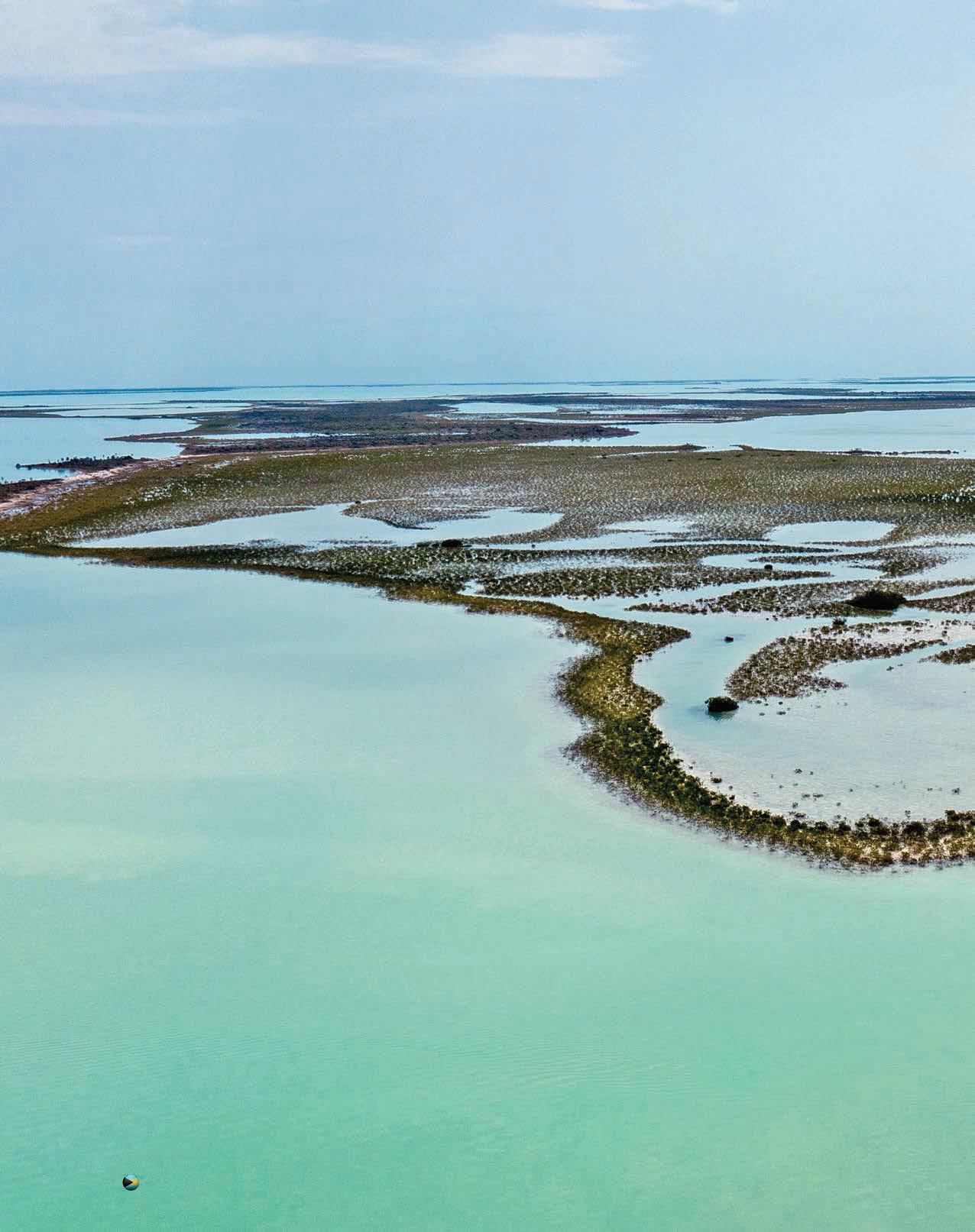
22 www.theflyshop.com s email: info@theflyshop.com
shapes as bonefish. Possibly mistaken for a shark at 150 feet, at half that distance reality clicks in and you know it’s the biggest bonefish that you’ve ever seen. The west side is rugged, remote, and there are no roads or communities. The only access is by boat, and a skilled guide is your best asset.
The north end of Andros is famous for white sand flats that appear to stretch all the way to the horizon. Long Cay, Joulters Cay, and numerous smaller islets are flanked by firm flats and turquoise channels that drop off into the depths known as the Tongue of the Ocean. This is an area where you can wade fish for a week and feel that you have only just begun to experience the magnitude of its bonefishing opportunities.
Andros has more shoreline than the entire country of Belize, and its fishing venues are both varied and extensive. You can head out with your guide in the morning, wading interior creeks on the incoming tide for tailers, then later find yourself hunting monsters along the edge of a barrier island that drops into deep water going all the way to Cuba. And as the sun sets you can relax in a chair on the beach, sharing camaraderie and a cool drink around the fire, knowing that tomorrow morning each of you have all that Andros has to offer still ahead.
TheIslandBig
It‘s been Andros Island in the Bahamas, not Cuba, not Belize, Key West, or Christmas Island, that has produced more trophy-sized bonefish than any other spot on the angling map!

www.theflyshop.com s email: info@theflyshop.com 23
Andros Island Bonefish Club photo
Mangrove Cay Club
IIN THE GALLERY of saltwater fly fishing locations, there are only a few absolute masterpieces that, as if they were designed by committee, combine all of the key elements and create a dream destination.
The development of Mangrove Cay Club ushered in a new era of comfort for Andros anglers, with lovely cottage accommodations, an inviting clubhouse, great bar, superb kitchen, top-flight service, an exceptional group of personable guides, and an ultraprofessional management team that anticipates the guests every need.
Fishing either begins or ends each day at the dock, and it is a relatively short run to the west side – though a run that is hardly necessary with miles of superb flats within easy striking distance. The numbers of fish in the area can be overwhelming, opportunities for trophy-size fish are routine, there’s very little other angling pressure on
this part of the island, and there is no better lodge on Andros than Mangrove Cay Club.
The lodge is located on the south shore of the Middle Bight of Andros. From that near dead center Andros location the guides have easy skiff access through the creeks to the North and Middle Bights, and the remote West Side. They’re able to travel to some of the best of Andros without ever having to trailer a boat or run in the open ocean. The action-packed days are spent with a fly rod on the platform, not wasted in transit.
The expert guides commonly fashion the day to the anglers’ interests, planning their day around the changing tides or to prospecting the protected, lee shorelines. They’ll either run some distance and fish back to the lodge, or begin nearby and spend the day searching for bonefish in the local flats, creeks and lagoons.
The facility is perfectly designed – eight identical suites with verandas overlooking the sea are contained in four beautifully landscaped duplex cottages spread along the shoreline. Each suite provides spacious and comfortable accommodations for two fishermen, with two queen-sized beds, air conditioning, ceiling fans, plenty of storage, and an adjoining sitting room that allows the early-riser to prepare without disturbing his roommate.
The meals are expertly prepared and get rave reviews. Capacity is 16 anglers. Their swimming pool is a wonderful place to relax after your fishing day.
This destination ranks high on our list. It is a five-star lodge, and a first-class fly fishing operation. We couldn’t praise or endorse Mangrove Cay Club more strongly.
s 7 night/6 day dbl occ angling pkg $7,000 Stays can be booked for as many nights as requested.

24 www.theflyshop.com s email: info@theflyshop.com
ANDROS
The newest thrill in Bonefishing Micro-Skiffs
The ultimate skinny water flats craft
IN MARCH OF 2023, I embarked on a three week familiarity trip to the Bahamas, concentrating on Andros Island followed by a hosted week to the two remote islands of Crooked and Acklins. During my trip I visited seven different lodges and fished out of about every imaginable flats skiff known to man, from old Dolphin Skiffs on their last legs to a Hells Bay Professional rigged with a power pole that tipped the scales at $60K. But it was at Mangrove Cay Club that I had the opportunity to fish out one of the coolest skiffs of all, a micro-skiff. The micro-skiffs we fished from are made by Gheenoe Manufacturing out of Titusville, FL, and are a game changer in the shallow water backcountry of Andros. Think of micro-skiffs as a canoe on steroids. They are long and slender and will hold two anglers, a guide with limited gear, and are purposely designed to float in a mere 3 inches of water or less. They are surprisingly stable on the water and stealthy-quiet. There’s a simple bench seat, a poling platform in the stern and a lean-bar in the front for the angler to center-up on. They skim on the surface like a water skeeter and allow you to get into bonefish-filled backwater lagoons and bays too shallow for a standard skiff to navigate, and too mucky to wade.

Andros is laced with hundreds of square miles of mostly impenetrable interior saltwater lagoons that are fed by small tidal creeks. The few of these that could be reached by plodding through deep muck and spidery mangroves are teeming with bones. Andros Island regulars have for years looked longingly at waving silver tails and waking fish out of range in thin water back bays and creeks, fish that are now accessible with micro-skiffs. Leave it to the lovely and wonderfully talented Liz Bain to figure out how to get deep into Andros Island backcountry bonefishing with the introduction of micro-skiffs! They are an absolute game changer!
Erik Argotti argotti@theflyshop.com
25
Mangrove Cay Club photos
Erik Argotti photos
Whether it’ll be your 1st time or your 50th
Ask yourself a few basic questions before you sit down and begin your search for the perfect spot in the sun.
IF YOU ’ VE BEEN there before, or if you’ve done a lot of trips, then you’ve already asked and answered these questions without much thought. But if you’re new to fly fishing travel, or just new to saltwater, or want to find and check off a new spot on your bucket list, you’d be wise to ask the right questions and reflect on the answers in your decision-making process.
Whether they think about it consciously or not, these are the simple criterion most angling travelers use in the decision process:
s Advice s Reputation s Price
s Equipment s Atmosphere of the lodge
s Level of accommodations
s Infrastructure
s Time of the season s Lodge location
s The quality of the guides
s Style of fishing you most enjoy (wading or poling)
s Numbers and size of the fish in the area.
THE DIRECTORY of the top locations in this part of the Caribbean isn’t a long one. Nor is the roster of great guides. At the same time, the list of bad destinations and bad guides is an even shorter one.
Why? The community of saltwater flyrodders who take the sport seriously enough to travel hundreds or thousands of miles to catch a fish and let it go is surprisingly small.
How small? When one considers that the entire universe of retail fly fishing is about equal to the sales of just one golf ball – the Titleist Pro V1 golf ball – it sort of puts things into perspective.
Those of us who fly fish and travel for a living and go to lots of different places, find that we’re running into many of the same, familiar faces all the time. You can bet that if a lodge does a terrific job, everyone in the sport will soon know. ESB Lodge in Mexico is a perfect example of this. And on the flip side, if they falter, everyone will know just as quickly. Reputations, both good and bad, are usually well-deserved and, in the tiny, rarefied world of fly fishing travel, only the strong are going to survive for the long haul.
It’s not a coincidence then, that the largest and most reputable angling travel agents all represent a remarkably similar, very short list of lodges. And the reason is simple...we’ve been there and they are places

Understanding how you prioritize those items will go a long way in helping you choose the right spot for your next trip. Some anglers want lots of fish, others are focused on finding just one big boy. Some anglers want fancy lodges, others are willing to sleep in a hammock. These decisions are important to choosing the lodge that is right for you and all of them can lead you in different directions.

we know we can count on to deliver what’s been promised – week in and week out, season after season.
Yet with every place and every guide in the Bahamas saying they’re the best, how do you sort the wheat from the chaff? Well, after guiding thousands of my friends and clients to fly fishing lodges, rivers, and flats for more than four decades, my advice is to consider your own priorities, and then ask an expert for help in getting exactly what you want.
Coming from an angling travel agent, that sounds self-serving. But the truth is that, beyond getting reliable advice from someone you can trust, using a reputable angling travel agent adds experience and objectivity to the decision, as well as a level of protection from some infrequent but troubling problems.
And if you weigh the consequences and cost of a bad decision, it can be a lot more expensive to make your reservations without a trusted travel professional. At some of these destinations tides are critical, the calendar window with the best chance of success is a narrow one, parts of the year are oppressively hot and humid, and the weather can be unreliable during certain times of the year. Who do you really trust to give you those straight answers?
- Mike Michalak mike@theflyshop.com
26 TIPS , PLANNING AND TIMING
Lodge Location
s Whenever or wherever you’re fishing in the Bahamas, if your trip coincides with good weather (little cloud cover and light winds) you are going to have a successful bonefishing trip.
s Some locations afford far more and better wading opportunities than others. Most destinations in the Bahamas offer some wading, just not a lot of it. In some spots wading is very tide dependent. In others the bottom may be too soft, too deep, or too dark to make it a great wading experience.
s Flats with proximity to deeper water usually offer more shots at trophy-sized bonefish.
s Trophy bonefish are where you find them. It won’t consistently be in the Mexican Yucatan, or Christmas Island, and they are less common on shallow flats, but you are bound to run across some big fish once in a while just about everywhere in the Bahamas.
s Some destinations are a stone’s throw from the fishing, while other lodges might run some distance or trailer to their fishing each day. The trade-off may translate into less time on the water, versus a greater variety of alternative flats conditions.
Accommodations & Price
There are some travelers who won’t accept anything less than the best and others who don’t care how many stars are attached to the place. Discriminating travel takes many forms and while it’s a fact that a more expensive
lodge doesn’t necessarily translate into better fishing or more fun, it is usually associated with a higher level of both accommodations and amenities.
Without exception, every lodge The Fly Shop® represents is worth every cent. There aren’t any destinations in our portfolio that don’t pride themselves on their fine fly fishing flats experience, the quality of their guides, and the food delivered from their kitchen.
Target Species
Fly fishermen destined for the Bahamas are usually targeting bonefish. You’ll read and hear about the opportunities for permit, tarpon, triggers or barracudas, but don’t get confused, distracted, or misled. Bahamas means bonefish and if your primary goal is permit, tarpon, snook, or a grand slam, go somewhere else. Sure, it happens – there is some terrific, isolated, permit fishing in the Bahamas and anglers stumble onto the occasional tarpon here and there, but other spots on the fishing map are lots better for both species.
Nowhere else on the map has better fishing for bonefish and in fact it’s getting better – the government of the Bahamas has responded to the growth and value of sportfishing tourism by enacting progressive regulations to protect their bonefish at the same time as there is less native pressure on the resource. There’s never been much in the way of industry in the out islands and, after a series of devastating hur-
ricanes, there’s less opportunity for employment than ever and all but a few of the 700 islands in the Bahamas are decreasing in population.
Infrastructure
There are few things worse in salt water than defective or substandard equipment. Having back up motors and properly maintained boats, trailers, motors, and essential gear are critical to the success of a lodge.
Too, it is essential that the skiffs and motors that the guides choose are appropriate for the water they fish, the distance they’ll travel each day, and whether they’ll have to do it in open water.
These are among the first things we check out when we visit the places we represent.
We do the homework, so you don’t have to!
We take our job seriously
We’ve been here for over 40 years, helping anglers choose the destination that best suits their interests and fits their wallet. The Fly Shop® is there to help decide where to go, what tides and moon phases are productive, pick the best guides, and offer insights into the correct tackle. We’re also there in your corner, as your advocate, making sure things go as perfectly as possible and to help in those rare situations when things go wrong.
Peak seasons and weather in the Bahamas
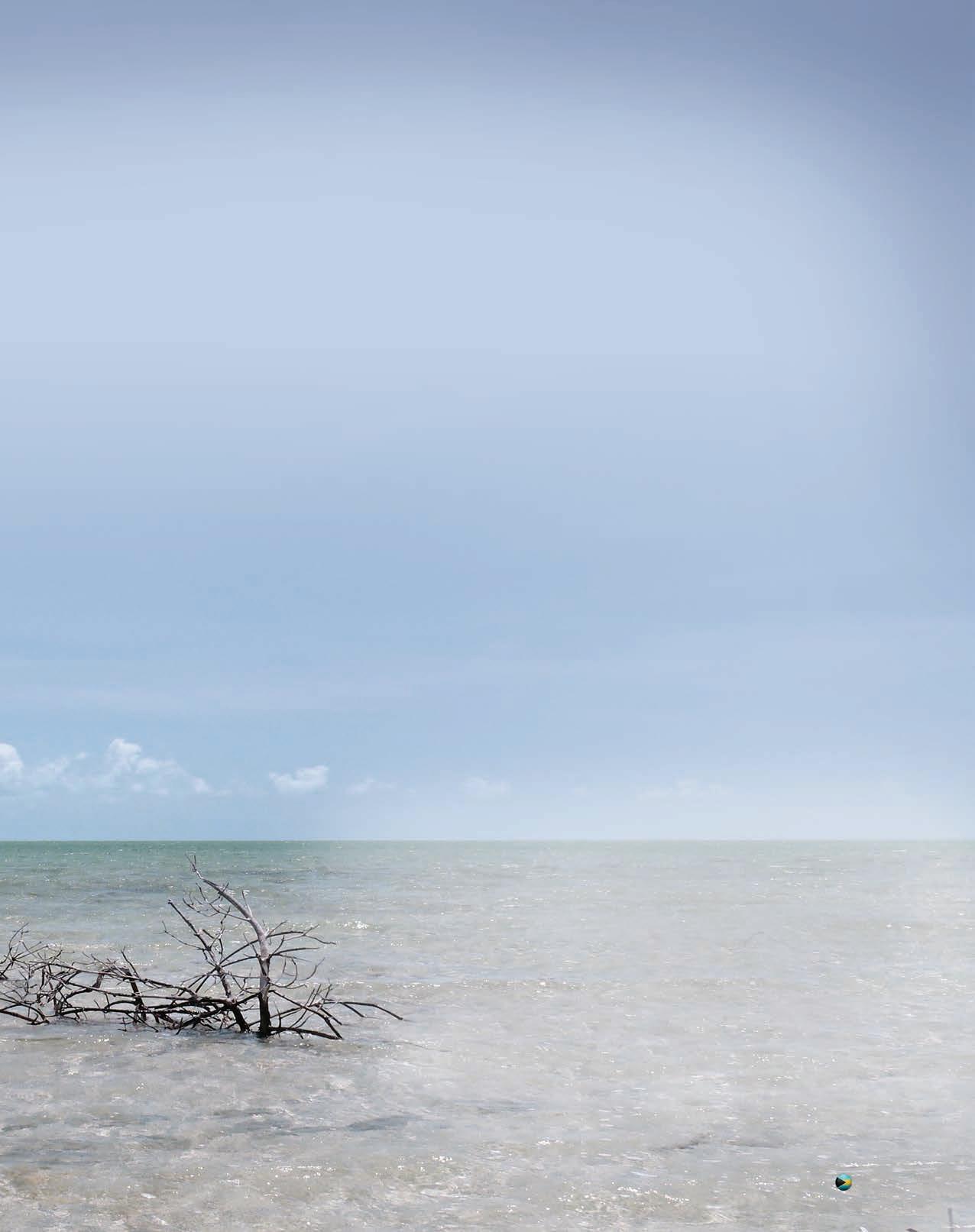
The formula for a great flats fishing trip is simple. String together three days of consistent good weather and great fishing will follow.
The months generally predicted to offer the best weather are considered peak season. Prices are often tiered to coincide with the best of that predicted weather. Of course, the weather is unpredictable and there are no absolutes. Timetables, graphs, averages, and other generalities related to “normal” climate conditions are inexact.
s July and August can be oppressively hot and humid. Many Bahamas lodges just close their doors because it’s an unpopular time. However, fish don’t care, and fishing can be superb.
s Weather patterns in the Bahamas usually last about three days.
s Lodges in the northern Bahamas are farther from the equator and their peak season may not arrive as early in the spring. As well, their winter weather might not be as reliably calm as destinations farther south in the archipelago.
s But the finest full week I’ve had in forty years of bonefishing was on Grand Bahama Island (the northernmost part of the Bahamas) in the month of January – which can be a questionable month to travel.
s September & October is hurricane season.
s But they’ve occurred during this century only once every four years on the average. During the last century, they averaged only once every nine years. This is one crap shoot that many veteran anglers rate high on their calendar.
www.theflyshop.com s phone 800-669-3474 27
HHH January HHHHH April H July HHH October HHH February HHHHH May H August HHHH November HHHH March HHHHH June HHH September HHHH December
Eric Ersch photo
Andros South

Andros South puts their emphasis exactly where most of our dedicated crowd of saltwater anglers feel it should be, with personable service, skilled guides, and a vast and varied fishery at the top of the list
THEIR HOME WATER , near the settlement of Kemp’s Bay, is the southernmost and the least inhabited part of Andros Island. They’re flanked to the east by The Tongue of the Ocean, a deepwater trough that drops to more than six thousand feet less than a mile offshore – the place scientists and saltwater fisheries biologists consider responsible for providing the interior flats of Andros with its amazing population of foraging bonefish. Along the edge of that saltwater precipice lies the third largest barrier reef in the world, the Andros Barrier Reef.
The diversity and size of the fishery offers a completely different fishing experience every day of your trip and it’s the variety of fishing in the southern part of the island that provides a great deal of the attraction.
The South Andros region is a complicated maze of tidal creeks and inland flats, all home

to a large population of hungry, aggressive bonefish. It’s only a short ride from the lodge to the first of miles and miles of easily-waded white sand flats, hidden mangrove creeks, and a vast interconnected network of inland lagoons that fill up with eager schools of bonefish on the change of every tide. And then there are the expansive west side flats – the feeding zone for double-digit bonefish coming in from the deep.
Andros South Lodge is intimate and very comfortable – a perfect bonefish basecamp. Guests enjoy air-conditioned accommodations and each angler has their own private room, with private bathrooms and plenty of space to unpack and get comfortable.
The homegrown Andros South guides are a fly fishing savvy crowd who know the water like the backs of their hands. They’ve built an enviable reputation for talent and an enthusi-
astic work ethic. This expert team is in large part responsible for the popularity and reputation this lodge enjoys among the sophisticated crowd of serious bonefishermen
Dinners at Andros South are served familystyle, professionally prepared by their kitchen staff, accenting the tastes and flavors of the Bahamas. Fresh local fish, lobster, chicken and conch are featured along with regional desserts like key lime and coconut pie.
Andros South is a destination for anglers looking for comfortable lodging, outstanding service, and some of the finest skinny-water bonefishing in the world.
s 7 night/6 day dbl occ angling pkg $6,350 Private rooms, shared guide Stays can be custom-built for as many nights as requested.
28 www.theflyshop.com s email: info@theflyshop.com
ANDROS ISLAND

www.theflyshop.com s phone 800-669-3474 29 Andros South photos
Mars Bay Bonefish Lodge

Mars Bay accesses more than a hundred square miles of perfect bonefish habitat, home to huge schools of aggressive bonefish and double-digit monsters – the trademark of South Andros Island.
YOU CAN EXPECT to encounter nearly every bonefish scenario possible on the south end of Andros. One day you’ll motor well south to find huge schools feeding over turtle grass. As the tide falls, you and your friend could be wading a hard sand flat and enjoy classic sight-casting to tailing singles in a foot of gin clear water. The next morning, your guide may run west through the creeks to an inland flats system, poling the shoreline of a secluded cay, putting you in position to cast to a pair of ten pounders hunting crabs among the mangrove roots. It would be impossible for you to fish every possible venue during your stay at Mars Bay.
The guides at Mars Bay are hand-picked professional watermen that call the south end of Andros their home. You can be sure when you leave the dock in the morning that he will be working hard, all day long to provide the best fishing possible, for beginners and experts alike.
Bill Howard is the owner and operator of Mars Bay Bonefish Lodge. A seasoned professional on the island with decades of experience, he oversees every aspect of the operation, and his mark is quietly placed on everything that you will experience there. Besides being an extremely interesting man to share dinner with, from building new skiffs to grilling your steak to perfection, Bill is there to personally ensure

30 www.theflyshop.com s email: info@theflyshop.com
SOUTH ANDROS ISLAND
that your time at Mars Bay will be the best bonefishing trip possible. With a maximum occupancy of ten anglers, Mars Bay is the perfect destination for a small group of friends. Their staff is super friendly, the facility sparkling clean and freshly painted. You can grab your own beer and mix your drink the way you like it. This is a fly fishing lo dge for sportsmen, and the perfec t place for a casual gathering with good friends.
Their three course dinner menu is Bahamian some nights and American on other nights. Dinner begins with a soup or salad, and the main courses are conch, lobster, snapper, grouper, rack of lamb,
rib eye steak, pork loin, or chicken. All the fish, lobster, and conch are locally sourced. The lamb is from New Zealand, and the steaks are fresh, never frozen, Nebraska beef. Both are grilled to perfection over a blend of hickory and mesquite by none other than Mr. Bill Howard himself.
The best flight option is direct from Ft. Lauderdale to Congo Town s 7 night/6 day double occupancy angling package $5,900 Saturday - Saturday

www.theflyshop.com s phone 800-669-3474 31
Mars Bay Bonefish Lodge photos
Michael Caranci photo
JOIN THE PRIME TRAVEL CLUB , AT NO COST . Provide us your email address and/or phone number for the categories you are most interested in, and we will notify you of special travel opportunities, last-minute cancellations, prime available dates at high demand fly fishing spots, and more. We promise not to flood your inbox with trivial information – only what you want and need.
Scan this code and sign up today... or simply go to our website to submit your info: https://www.theflyshop.com/prime-travel.html

The Fly Shop’s Prime Travel Club

Prime Travel Categories:
s Last-minute cancellations – one angler’s misfortune is another’s opportunity
s Dead-center, hard to secure dates at world-class fly fishing destinations
s Single anglers looking for a fishing partner
s Hosted trips with a member of The Fly Shop’s travel team
s Worldwide fly fishing destinations best suited for couples
s Family trips – what better way to make long-lasting memories?
s Corporate & incentive travel
32 www.theflyshop.com s email: info@theflyshop.com
Toby Nolan photo
Brought to you by people you can trust.
Prime Travel is your definitive source of information on the finest fly fishing destinations in the world. Whether you are looking for a family holiday, a last-minute cancellation special, or a prime week at a high demand fishery, Prime Travel is a resource-tool to help find exactly what you are looking for.
s Last-minute cancellations – one angler’s misfortune is another's opportunity
If you are one of those fortunate fly fishers with an open calendar and can travel at a moment’s notice, then you should get on our shortlist of last minute cancellations, low-season incentives, special offers and deals. These are high quality trips at some of the finest destinations in the world, often offered at substantially discounted rates. Get on our list, and we will update you on a need to know basis.
s Dead-center, hard to secure dates at world-class fly fishing destinations
Sometimes you just want the best – the best destination for the species you are pursuing, at peak season, outfitted by the best in the business. The Fly Shop® keeps its finger on the pulse of availability at some of the finest and most difficult places in the world to secure space. Maybe it’s a prime week on the Babine River for steelhead, or maybe an absolute dead-center date at ESB Lodge for a week of permit fishing. Fresh or saltwater, we have the inside track on prime dates, all it takes is to sign up for notifications.
s Single anglers looking for a fishing partner
Fishing as a single angler can be expensive, especially when it comes to saltwater fly fishing destinations, where solo anglers can expect to pay upwards of 60% or more for the privilege of having their own private room, guide and boat. The advantages are obvious, but you will pay a premium. If you don’t mind sharing your room and fishing with another like-minded angler, we may be able to help you find a suitable partner. We keep a long list of anglers looking for a fishing partner they can match up with and share the costs. And who knows, you might meet your next wingman!
s Hosted trips with a member of The
Fly Shop’s travel team
One of the best ways to experience a new fly fishing destination is to join one of our staff on a “hosted” trip. You’ll enjoy the award-winning service The Fly Shop® is recognized for and you’ll have the added bonus of our experienced staff right there to help, start to finish. From helping rig your rods, to early morning casting lessons, to working with the lodge staff to fine-tune your daily goals and expectations, our pro-staff will do everything possible to make your trip a memorable and rewarding one. And if you’re looking to avoid single supplement fees, hosted trips are a perfect option. Who knows, you might meet your new fly fishing partner.
There are no additional fees or costs associated with a hosted trip with The Fly Shop®. And, our staff usually travels with extra gear and flies, to share.
s Worldwide fly fishing destinations best suited for couples
There are some fly fishing lodges and outfitters that do a great job of catering to angling couples, and nonfishing companions, and the staff here at The Fly Shop® are experts at creating angling holidays that can cater to a memorable combination of interests.
We’ve got places with amazing snorkeling, worldclass wildlife viewing and photography, whale watching, mountain biking, hiking, horseback riding for all skill levels, and cozy spots for those who just want to curl up with a good book in front of the fireplace while their best friend is off catching fish.
The common denominators at all these getaways include breathtaking scenery, a variety of outdoor experiences, and fly fishing. We’ll find you some great fishing that, combined with a line-up of non-angling activities, will make you a vacation planning hero.
s Family Trips – what better way to make long-lasting memories
Few things in life are better than a family vacation to a warm tropical paradise, a quiet trout stream, or the wild maritimes of remote coastal Alaska. These family-oriented vacation spots offer world-class fishing and non-angling activities that are sure to keep the entire family entertained and happy.
We represent a number of lodges and outfitters
that are suitable for not only the angler in your life, but the entire family. They represent a broad spectrum of experiences, locations and budgets that are sure to make everyone happy.These are the types of vacations that forge strong family memories that last a lifetime
s Corporate & incentive travel
What better way to facilitate teamwork, camaraderie and the spirit of cooperation within your business than a fly fishing trip with your employees. This could be a single guided day on a trout river in Northern California or a multi-day trip to a destination lodge in Belize, Alaska, Mexico, Canada or Bahamas – the choices are endless.Trips can be custom-tailored for business meetings, board gatherings, team-building, educational seminars, or incentive travel rewards. We can also arrange for certified casting instructors to teach you and your team how to fly cast and fish. We work with a number of destination lodges that can accommodate as few as 4 or as many as 40 guests at one time. The Fly Shop® has helped companies like Walmart, Turner Communications, McDonalds, Ford Motor Co. and others. We will handle all the fishing logistics from start to finish.

www.theflyshop.com 33
Marcos Furer photo
WORLDWIDE DESTINATIONS
Mangrove Cay Club photo
The average international fly fishing trip takes a minimum of 40 hours of research. Save valuable time and gain inspiration with The Fly Shop®.
LOCATED BEACHFRONT between Deep and Little Creeks on the eastern shore of South Andros, you would be hard pressed to find a better location to base your bonefish vacation than Bair’s Lodge. The flats of South Andros are some of the largest and most varied in the world, offering daily opportunities to both wade or fish from the boat. South Andros has long been synonymous with some of the biggest bonefish in the Caribbean. The south end, and more particularly the west

Bairs Lodge
This exquisite beachfront lodge continues to provide anglers with the highest level of hospitality and world renowned fishing.
side of the island, have built a solid reputation as one of the best locations to search for a bonefish of epic proportions.
There is an immense interior system of protected flats and creeks within easy striking distance of the lodge. Even when all but the worst of winds are howling, anglers can be sure to be on the water and hunting bones.
The guides at Bair’s Lodge are some of the best on Andros, many with decades of guiding experience, and all have extensive knowl-
edge of the surrounding waters. They understand how tides affect bonefish feeding behavior, and know where to fish under different weather conditions. With trained eyes developed over years of spotting bonefish, they will put you on fish, and give you as much or as little guidance and instruction as desired.

34 www.theflyshop.com s email: info@theflyshop.com
ANDROS
SOUTH
Rusty Chinnis photo
Bair’s offers deluxe oceanside lodging in an attractive setting surrounded by palm trees. The bright, airy lodge is nestled on an inviting white sand beach. Two of the six rooms in the lodge open to a long veranda facing the ocean, furnished with comfortable benches and tables. An ideal place to sip coffee in the morning before the breakfast buffet is served, or enjoy cocktails in the evening. The beautifully decorated, spacious bedrooms have ter-
racotta tile flooring, white cotton sheets, as well as tropical-weight duvets, and plenty of down pillows. En-suite bathrooms are standard, and hot water is plentiful. And for those more adventurous anglers, there is an outdoor shower overlooking the beach.
Dinner begins with appetizers including delicious soups and conch ceviche. Their emphasis is on mixing local dishes with light fresh recipes such as mango salsa and grilled fish. They take great pride in serving fresh local produce, paired with fresh mahi-mahi, tuna, grouper, snapper, conch and lobster. House wines including Argentine Malbecs, Chilean Chardonnay, Sauvignon Blanc, and Cabernet Sauvignon are served with dinner. Desserts vary from chocolate decadence to key lime parfaits. After dinner, liquors are served in the sitting room.
Guests often gather in the evening around the beachfront fire pit under the stars, sharing stories of their fishing day and planning the next.
Since the early 90’s, Bair’s has been known for providing some of the best fishing Andros has to offer. The lodge has also come to represent quality guiding, delicious food, comfortable lodging and a Bahamian version of old-fashioned, courteous hospitality.
s 7 night/6 day dbl occ angling package $7,350 Stays can be tailored for as many nights as requested.

www.theflyshop.com s phone 800-669-3474 35
Matt Jones photos
Matt Jones photo
Adam Barker photo
Swain’s Cay

The peaceful fishing lodge at Swain’s Cay uses top local independent guides and delivers some of the world’s ultimate bonefishing. The accommodations and angling packages can be custom-designed for everyone from hard-core fly fishing fanatics to the casual angler looking for more than flats fishing.
Guests can schedule as many or few fishing days as they want during their holiday. Anglers, their companions, or the entire family can choose from a broad range of activities that include reef and offshore fishing, terrific snorkeling in the nearby reefs and blue holes, kayaking, exploring the island by bicycle, or just kicking back with a book and relaxing in a hammock under a swaying palm tree.
ANGLERS AT the lodge will find it is uniquely positioned on Mangrove Cay, affording easy access to both the south bight or fabled middle bight of Andros. Guests rendezvous with guides close to the area they’ll be fishing, reducing the run time, extending the fishing day, and ensuring you are always a short run to the day’s fishing flats.

The Reefside Restaurant & Bar is a community gathering spot, adding a wonderful cultural element to every stay at Swain’s. It is right on the beach and opens early for breakfast. The kitchen serves up delicious three-course dinners nightly that feature fresh lobster, locally-
caught fish, conch, ribs, chicken and steaks. Guests order from the menu and revel in being able to make nightly selections and repeat their favorite dishes. Non-fishing companions or family can enjoy lunch or a snack at their convenience.
The beachside terrace is the perfect spot to relax with an ice-cold Kalik or tropical cocktail after a successful day on the flats, or eco-touring, relaxing with friends while enjoying stunning views overlooking the water.
36 www.theflyshop.com s email: info@theflyshop.com
ANDROS
Michael Caranci photo
Swain’s Cay Lodge is the ideal spot for the angler searching for a top-notch fishing experience with a festive, intimate holiday atmosphere not common to most fishing lodges.
With a variety of accommodation options, and a flexible schedule that can be modified to allow days off from the flats, and the opportunity to enjoy other activities, it may be the ideal family destination.
Guest accommodations are tastefully decorated and provide every tropical comfort imaginable. The air-conditioned rooms, suites, and garden apartments are close to the beach and all feature private bathrooms with hot showers, queen-sized beds, high thread count linens, Wi-Fi and private patios.
The time to be there is from October through June, which are typically the best months to book a bonefishing trip in the Bahamas. The weather and water temperatures are ideal, and tropical disturbances are least likely.

The variety of flats in the middle and south bights include firm white sand and mangrove-clad islands, all connected to the ocean with emerald green channels. You’ll have the option of wading skinny water for tailing bones, or casting from the deck of a classic skiff, depending on your preferences and the tides. No matter what the tides are doing, or what the weather, excellent bonefishing opportunities abound at Swains Cay.
s 7 night/6 day double occupancy angling package $5,495 Shorter packages and pricing for non-angling companions are available.
phone 800-669-3474 37





















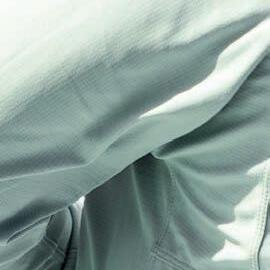




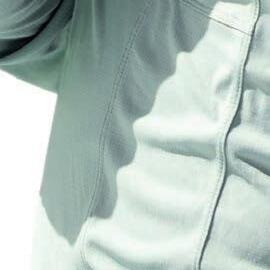




Iyke’s ceviche recipe
Mangrove Cay Clubs, chef Iyke shares his classic epicurian staple from the Bahamas. Ubiquitous, simple and tasty!
LIKE SO MANY traveling fly fishermen, I have a passion to see the world with fly rods in hand in search of far-off places and exotic fish. And I get almost as excited about sampling local tastes, flavors, libations and cuisines of the countries I visit. The Bahamas is no different. The country offers fresh new flavors and dishes that are novel to many of us, yet most are familiar enough that we aren’t afraid to dig in and try them. Johnnycakes, conch, fish stew, peas and rice, and Guava Duff (a steamed pudding dribbled with rum sauce) are famous Bahamian dishes you will find served all over this island nation.
Because the bounty of the ocean is always near, fresh fish, shellfish, lobsters and crabs are among the favorites you will see on menus, and served at fly fishing lodges. Local dishes are a combination of West Indian flavors with Latin, British and American South influence. Grits are common (cheesy conch grits in the morning are amazing) as is a considerable amount of West Indian spice. Conch is a favorite among Bahamian chefs and is on the table almost every day. This native mollusk is a local staple and the national dish of the Bahamas. Common conch dishes you’ll encounter are fried conch fritters, conch salad (ceviche), and cracked conch. You typically see at least one of these dishes on the menu at all of the local restaurants, and all are commonly served daily at lodges.
Before my first trip to the Bahamas, I had never tried conch. Living in Montana and now NorCal, it isn’t something you would find at a local restaurant or at the grocery store. In the Bahamas it is an everyday event and the conch ceviche…well, I could literally live off it. Typically served as an appetizer or entree, the bright, fresh citrus flavor and slightly chewy texture of the conch perfectly contrasts with fresh mixed veggies like tomatoes, peppers, avocados and sweet onions. Throw in a couple of icecold Kaliks, and I am a happy camper. Recipes vary, but most incorporate common ingredients and very similar flavors. Fresh is key. Below is a recipe from Mangrove Cay Club, one of the favorites of my trip. You can swap in shrimp, clams, lionfish, abalone or a firm or semi-firm lean white fish, since fresh conch is rarely available to most of us in the States. Of course we highly suggest heading down to the Bahamas and personally enjoying an authentic version paired with a cold beer – perfect after a long day on the flats chasing bonefish.
Erik Argotti argotti@theflyshop.com
Mangrove Cay Club Conch Ceviche
Chef: Iyke’s ceviche recipe
Dice all ingredients (below) into medium sized chunks, mix well and serve with a cold Kalik


Ingredients:
2 large fresh conch, skinned and cleaned
1 tomato
1 cucumber
1 red or white onion
1 red of green bell pepper
1/2 rib of celery
fresh hot pepper to taste
juice of 3 limes or lemons
juice of 1/2 large orange
salt to taste
www.theflyshop.com s phone 800-669-3474 39
FOOD IN THE BAHAMAS
Andros

Wild Outdoor Media photos 40 www.theflyshop.com s email: info@theflyshop.com
ANDROS
Island Bonefish Club A brief history of “The Bonefish Capital of the World” NORTH
BEHRING POINT , is the nexus where the North Bight of Andros Island meets the Atlantic Ocean. It is, arguably, the most famous spot on the Bahamian bonefish map, and was proclaimed “The Bonefish Capit al of the World” by none other than the legendary Charlie Smith when he opened Charlie’s Haven in 1968. It was the first B ahamian-owned fishing lodge in the island nation. While other spots on other islands were better financed and more successful, for a time none were more popular with the hard-core crowd of serious fly fishermen than The Haven.
Over the course of his career, Charlie poled around a number of the Bahamian prime ministers, George H.W. Bush, Ted Williams, Benny Goodman, Jack Hemingway, Dag Hammarskjöld, and a laundry list of elite fly anglers. As a protege of Bob Nauheim and Frank Bertaina (Fishing International) and the owner of one of the largest fly shops in the States, I was lucky enough to fish with Charlie and his incredible team of guides more than a dozen times and am proud to have called him a friend.
The place burned to the ground in 1983 and was later re-built in stages. The plumbing, the electricity, and other critical parts of the infrastructure didn’t always work, but the guides did. In fact, there was never a better team of bonefish guides assembled anywhere than those that worked out of Charlie’s place in the mid to late 1980’s. However, the Haven was never able to arrive at its potential, perhaps because (as he readily admitted) despite all his charm, strengths, talents, and skills, Charlie wasn’t much of a businessman.
There’s no question that Charlie Smith, who passed away in December of 2018, left a legacy to the world of fly fishermen and to his countrymen. His impact on bonefishing in the Bahamas has been profound. He shepherded the sport in its infancy when the audience wouldn’t fill a large theater, was instrumental in the development of one of the most iconic bonefish flies of all time – the Crazy Charlie – and inspired thousands of anglers. Charlie taught his children to speak the language of fly fishing (three of them now own lodges on Andros) and trained his guides so well that several of them became famous in their own right, opened lodges of their own, and became his competitors.
None was more talented as a guide, better understood the complexities of bonefishing, or was more personable than Rupert Leadon. He was also the first of the gifted cadre of Haven guides to strike out on his own when, in 1984, he began building Andros Island Bonefish Club. He took with him the support of George Hommel (founder of Worldwide Sportsman), and his benefactor, the legendary saltwater fly fisherman, Billy Pate. Rupert and his new lodge also had the prestigious endorsement of Lefty Kreh, Mark Sosin, and A.J. McClane, as well as the muscle of the leading angling travel agents in what was then a small saltwater fly fishing market, with little competition.
Yet the reason for the remarkable success of Andros Island Bonefish Club (and the fourteen other lodges now located on Andros) wasn’t just Rupert...it was the location at The Bonefish Capital of the World.
We lost Rupert in late June of 2012, but not before he passed the reins, nose-to-the-grindstone work ethic, and his warm smile to his lovely daughter, Juliet Leadon-Newbold, who carries on the Club’s legacy.
What was in the 80’s one of the only games in town has since been challenged for supremacy by more than a dozen other new additions to the roster of Andros Island bonefish lodges. But the Andros Island Bonefish Club continues to provide guests with comfortable accommodations, seasoned guides, and world-class bonefishing.
Andros is made up of three different major islands (North Andros, Mangrove Cay, and South Andros) and hundreds of cays joined by mangrove estuaries and tidal swamplands.
The Behring Point location of Andros Island Bonefish Club is on the southernmost side of North Andros Island. It is a great site, chosen when Rupert Leadon had pick of the litter of locations and could build just about anywhere. Rupert carved out the lodge site with a machete in 1984 after purchasing the land from the government, and his decision to make Behring Point his home put the lodge in the fly fishing limelight and has kept it there for more than thirty years. From that base, using a fleet of swift Mavericks and shallow-draft Dolphin Super Skiffs, the expert guides at Andros Island Bonefish Club don’t have very far to go to get their clients in front of the bonefish that made this island famous.
Over the course of those three decades, Andros Island Bonefish Club has established a stellar reputation as a place you can count on, year after year, for great bonefishing.
Andros Island Bonefish Club overlooks the water and their dockside bar, The Watering Hole, has been a favorite gathering place for serious bonefishermen since the doors opened. And there’s no question in the minds of the guests – this place is all about bonefish. No frills, nightclubs, or Boll & Branch bedsheets, just good food, good guides, and a steady focus on miles of nearby bonefish flats.
Andros Island Bonefish Club is a swell spot and remains one of the best bonefish lodge values in all of the Bahamas.
 Mike Michalak, 2023
Mike Michalak, 2023
andros island bonefish club
and its team of fine guides have built a stellar reputation over the last thirty plus years for reliable service, great fishing, cold beer, and fair prices s 7 night/6 day dbl occ packages $4,335 Stays can be fashioned for as many nights as requested.

www.theflyshop.com s phone 800-669-3474 41
What was once one of the only games in town in the 80’s has since been challenged for supremacy by more than a dozen other new additions to the roster of Andros Island bonefish lodges. But the Andros Island Bonefish Club continues to provide guests with quality accommodations, exceptional guides, and world-class bonefishing, all at a great price point.
Joulters Fly Fishing
We are very enthusiastic about Joulters Fly Fishing and the access they provide to some of the finest and least-fished flats on Andros Island – all right out the front door.

JOULTERS FLY FISHING , located just outside the sleepy village of Nichols Town on the northeast side of North Andros Island, is a handsome beachfront villa just a rifle shot away from shallow, easily waded flats that stretch to the horizon. The operation is an assemblage of six North Andros guides (owners and partners) who have been guiding these waters for an average of 18 years, with two having over 25 years of experience.
The location of the lodge allows anglers access to hundreds of square miles of wadeable and boatable flats, cays, shoreline, and inland estuaries – 40 miles down the “West Side”, 20 miles down the east side of the island, and north to the Joulter Cays and beyond to Chub Cay and the Berry Islands. No longer will anglers endure hours of trucktime each day trailering boats on washboard roads to get to the Joulters – they are now within easy striking distance thanks to Joulters Fly Fishing. Whether it be bonefish, tarpon or permit, the flats fishing opportunities here are near endless.

Joulters Fly Fishing is not your typical lodge. You’ll have your own two-bedroom, ocean-front villa with a living room, bath, full kitchen, and everything you need. The guides go home to their families after dropping you off in the evening, and after the chef has served dinner you are left with the place all to yourself.
The lodge features two ocean-facing units with a common area between them that leads to an extra ¼ bath and laundry room. Each unit has a living room/dining area, two air-conditioned bedrooms, each with two twin beds, and a full kitchen and bath. There is a TV and WiFi if you are inclined. A fully-enclosed, completely screened patio runs the length of the building with comfortable patio furniture in which to relax after a “tough day at work”.
The full kitchen will be stocked with everything you need to make your own breakfasts each morning. The chef will have prepared the next day’s lunches before she departs each night. Two healthy sandwiches each, in plastic containers so they can be freshly assembled at lunchtime, along with chips, snacks, a piece of fruit, soft drinks, Gatorade, juices, etc.
After each fishing day the chef will greet you with appetizers, typically conch fritters or the like. While you jump in the ocean out front for a swim, take a shower, or kick back on the patio with a cold one, the chef will put the finishing touches on dinner. Makesha is amazing and the entrees and side dishes feature lobster, conch or fresh fish as the main course. After dessert she will clean up and leave you and your friends time to unwind and chill.
▲ 7 night/6 day dbl occ angling package $4,600 Shorter and longer packages are available on request. Trips to the West Side and Chub Cay add $100 per boat fuel surcharge.
42 www.theflyshop.com s email: info@theflyshop.com
Joulters Fly Fishing photos
NORTH ANDROS
Dressing for the Flats
Dressing appropriately for a day of wading or poling the flats is extremely important.
BEING COMFORTABLE , in an otherwise uncomfortable environment makes all of the difference in the world! The right gear will keep you cool, protect you from the sun, and allow you to keep pushing forward so that you are ready and focused when the big one starts tailing in front of you.
The following is my favorite kit, the outfit I wear every day I am on the flats. Let's go from top to bottom:
Hat I wear a ball cap and keep another spare in my waterproof backpack. I’ve lost them ripping across deep water in the skiff when it catches the wind. You do not want to spend an afternoon on the flats without a hat. My favorite hats are the lightweight synthetic (The Fly Shop®) hats that we give away to all our traveling anglers. They dry super quickly and are easy to clean in the shower.
Sun Gloves Simms Solarflex SunGloves will protect the back of your hands, and give your fingers some protection while stripping. I greatly prefer this model because it has an open palm, letting me actually still feel the cork handle of my fly rod. Get some FlexxWrap tape to reinforce the high traffic areas on your stripping fingers. It will save you some serious line burns!
Hooded Tech Shirt Gone are the days of the vented, collared, button-up shirt on the flats. Hooded tech shirts are a total game changer. They are far more comfortable and the hood adds another layer of sun protection over your ears, neck and face. Skwala’s new SOL Tropic Hoody is the best I have worn.
Neoprene Socks Use Simms

Neoprene Wading Socks inside the Flats Sneakers. They are very comfortable and easy to rinse out each evening, ready to go again tomorrow.
Gravel Guards You want the Simms Velcro Gravel Guards over the top of your laces to keep sand from getting inside your boots and neoprene socks. You can really ruin your feet if you forget these, sandblasting your ankles and toes to oblivion.
Sunglasses You want high-end shades on the flats. If you cannot see the fish, you’re not in the game. I much prefer glass lenses to polycarbonate, as they don’t scratch nearly as easily. You will want an amber or copper lens. Costa Del Mar’s 580g Green Mirror lenses are my absolute favorite for the flats. They cut the sun’s glare well, while at the same time creating enough contrast to pick up the slightest irregular shape or color on the bottom. Bring two pairs.
Buff® Buff face masks are a mandatory part of the flats uniform these days. I don’t know how anglers lived without them before! Full protection from the sun for your face, nose, ears and neck. Bring two of them.
Sunscreen Buffs still can’t completely replace sunscreen, especially on the nose. Get the good stuff. I use Neutrogena Sheer Zinc 50+. It is by far the best I have found, and I’m a ginger with the complexion of a jellyfish, so I know.
Reapply at lunch!!
Flats Pants You want these to be lightweight and breathable, and not too billowy and baggy. Skwala’s new SOL Wading Pants are crazy comfortable and amazingly sharp looking. I recently wore them wading the flats for 2 weeks straight in the Seychelles and Oman, then wore them to dinner at a Michelin 3-Star restaurant in Dubai the next day. They are amazing!
Simms Boots The Simms Flats Sneaker is second to none. Lightweight and comfortable, they will protect your feet from coral, and you can walk miles in them without your feet getting destroyed.
Rain Gear I don’t leave the lodge without a lightweight rain jacket, and in some cases, pants. Too many times, far off on some distant flat, I have been subjected to some pretty severe rain squalls. A lightweight rain jacket also comes in handy on a wet ride back to the lodge in a quartering sea.
Justin Miller justin@theflyshop.com
www.theflyshop.com 43
Matt Jones photo
The Out Islands of the Bahamas
Grand Bahama
● freeport
Bimini Islands
● marsh harbour
Great Abaco
Berry Islands
nassau
● New Providence
Atlantic Ocean
Eleuthera
Andros
Great Exuma
Cat Island
● George Town
San Salvador
Rum Cay
Long Island
Ragged Island
Crooked Island
Acklins Islands

Mayaguana
Turks & Caicos
44 www.theflyshop.com s email: info@theflyshop.com
EVERY ISLAND IN the Bahamas except two – New Providence Island and Grand Bahama Island – is included in the Out Island category. There are more than seven hundred Out Islands (sometimes referred to as the Family Islands) in the archipelago and most of them are uninhabited. The size of the island doesn’t matter in the slightest; it’s all about population. New Providence Island is where the capital of the Bahamas, Nassau, is located, and Grand Bahama Island is where the only other Bahamian version of a metropolis (Freeport) is situated.
The most populous of the Out Island group are Abaco, Andros, and Eleuthera; all the others are more sparsely inhabited and far less economically developed. The Out Islands tend to be less populous as one moves southward.
At the beginning of the 20th century, more than 75% of all Bahamians lived in the Out Islands. By the 1970’s, two-thirds of all Bahamians in the island nation lived in Nassau, or elsewhere on New Providence. The dramatic population shift was related to a lack of a stable job market in the Out Islands, where there is little industry and almost no agriculture. Only pineapple cultivation and salt-raking provided steady wage jobs, and even that work was found only on a few islands.
On a recent reconnaissance visit to Crooked and Acklins Island and the sparsely populated north end of Andros to evaluate angling opportunities, and visit the lodges we represent, it became immediately obvious that whole regions of the Bahamas continue to depopulate.
Today, tourism, health, and the service industries drive what little economy Out Islanders have left. There are lovely hotels and beautiful resorts on Eleuthera, Abaco, Long Island, and Great Exuma. Tourism continues to prosper in a more intimate fashion on the smaller and more remote cays of the Out Islands. Their beaches, snorkeling, SCUBA diving, and honest local people are important attractions to Out Island travelers.

Saltwater fishing takes on two shapes: in-shore and off-shore. And in those situations where there is a large human population and a very accessible in-shore fishery, it is often decimated. Southeast Asia, Fiji, the Dominican Republic, and Haiti are prime examples of islands, or island nations with historically vibrant in-shore fisheries that have been virtually wiped out by unregulated netting and commercial harvesting of in-shore species.
We have only to look at the bonefishing on Christmas Island as another example of a steady decline of a flats fishery with a corresponding rise in population. Fortunately the implementation of speciesoriented regulations with draconian penalties has reversed that pendulum, but the question remains – In this very quickly changing world, with its relentlessly increasing population and climate change issues intensifing, what does the future hold for our sport?
In the Bahamas, my prediction is for the constant improvement of a fishery that is already wonderful. Progressive catch-and-release regulations, licensing, professional peer group pressure, and the self-regulating aspect of a small, slow-growing group of participants are already having a positive effect on the fisheries.

THE OUT ISLANDS OF THE BAHAMAS www.theflyshop.com s phone 800-669-3474 45
The Bahamas is one spot in the world of fly fishing where the fishing isn’t what it used to be. It’s better!
Deep Water Cay Club photo
Matt Jones photo
Weather and Seasons in the Bahamas
Average Temperatures in the Bahamas
As a tourist, this is weather that you could quickly get used to. The trade winds have blessed the Bahamas with warm year-round weather. Winter lows average a comfortable 70˚ Fahrenheit, and summer highs ( with high humidity) are at around 80˚-90˚, with a gentle dip at night of just 5˚ to 7˚. The result? A climate you can enjoy fishing most days of the year.
This graph is for Andros Island and represents a 10-year average. Temperatures shift slightly from north to south in the Bahamas. Plan on slightly lower (1 or 2 degrees) temperatures in the northern islands in the winter and slightly higher (1 or 2%) humidity in the southern Out Islands in the summer.
be there when you need it, last for years and add a great deal of comfort to your holidays.
Cloud cover in the Bahamas
The average percentage of the sky covered by clouds varies over the course of the year. The clearest part of the year begins in October and continues through mid-May. On March 6th, statistically the clearest day of the year, the sky is clear or mostly clear 74% of the time and cloudy or mostly cloudy 26% of the time. Heavier clouds usually occur during the rainy season, June through September. On the cloudiest days of the year, the skies are clear about 35% of the time and cloudy 65% of the time.
Cloud Cover Categories Clear Cloudy Overcast
January 68% 10% 22%
February 69% 11% 21%
March 68% 11% 22%
April 68% 10% 22%
May 65% 12% 23%
June 41% 29% 30%
July 44% 39% 22%
August 44% 39% 22%
September 41% 29% 30%
October 65% 12% 23%
November 68% 10% 22%
December 69% 11% 21%

Wind & Rain in the Bahamas
Even paradise needs to cool off with a little rain now and then. The islands have rain year-round, which explains the lush vegetation. May and June are the months with the most rain, typically with about twice as much falling in the northern islands as in the southern ones.
Consider that much of the cloud cover is transient and a great deal of it occurs at night. You can’t prevent cloud cover, but you can compensate for it by choosing the correct color of polarized glasses.
Write it in stone…When the weather is good, anywhere in the saltwater world, the fishing is going to be great!
Hurricanes in the Bahamas
Officially, the hurricane season in the Caribbean lasts from June through November. But the worst in history have almost all occurred in late August and early September. There are 5 classifications, based on wind speeds and potential to cause damage. Category 1 is the weakest classification of a hurricane, just above the strength of a tropical storm. Category 5 is the strongest possible, though they have been considering adding a Category 6 after some extremely powerful hurricanes have made landfall throughout the Caribbean recently. Here are some of the Bahamas’ worst over the last 30 years.
Hurricane Andrew August 16, 1992 Cat. 5
Hurricane Katrina August 23, 2005 Cat. 5
Hurricane Sandy October 22, 2012 Cat. 5
Consider the potential for rain ranges from 20% to 50% during the most popular fishing months in the Bahamas. It is going to rain. But the squalls and thundershowers usually pass through quickly and the day resumes its glory. If you’re properly prepared with a comfortable, breathable, fully rain-proof jacket and pants, rain never has to ruin your day.
A final word of advice. If you are serious about the sport and plan to make fly fishing the flats a regular event in your life, invest in the best quality rain gear you can find. It will pack away to almost nothing,
Hurricane Irma August 30, 2017 Cat. 5
Hurricane Dorian August 24, 2019 Cat. 5
Over the past century, hurricanes have hit the Bahamas, in various strengths, on an average of about once every 4 to 5 years.
By definition, hurricanes are large, spiraling tropical storms in the Atlantic that can pack wind speeds of over 160 mph and unleash more than 2.4 trillion gallons of rain a day. The difference between a
46 www.theflyshop.com s email: info@theflyshop.com WEATHER FACTS
Average Monthly Temperatures on Andros High Low Humidity January 80 65 74% February 81 64 73% March 82 66 70% April 84 69 69% May 87 73 71% June 88 75 72% July 90 76 73% August 90 76 74% September 90 75 75% October 87 73 75% November 85 71 75% December 81 68 74%
Average monthly Wind, Rainy Days & Precipitation Wind Rainy days Precipitation January 8.9 mph 6 2.0 inches February 11.2 mph 6 2.1 inches March 11.2 mph 8 2.8 inches April 11.2 mph 6 2.0 inches May 11.2 mph 10 6.2 inches June 8.9 mph 13 9.3 inches July 8.9 mph 17 5.7 inches August 8.9 mph 16 7.6 inches September 8.9 mph 19 7.6 inches October 8.9 mph 15 5.6 inches November 11.2 mph 9 2.7 inches
December 8.9 mph 7 1.8 inches
tropical storm and a hurricane is wind speed; tropical storms usually bring winds of less than 38 mph, whereas hurricanes are officially named once they reach sustained winds of 74 mph and higher. Though they last only a few days, their devastating effects at the individual level can be tragic, are felt for generations, and have changed the course of history of this small island nation.
Peak Seasons in the Bahamas
THE FORMULA for a great flats fishing trip is simple. String together three days of consistent weather (no matter what month it is) and great fishing will follow.
The months generally predicted to offer the best weather are considered peak season. Prices are often tiered to coincide with the best of that predicted weather. Of course, the weather is unpredictable and there are no absolutes. Timetables, graphs, averages, and other generalities related to “normal” climate conditions are inexact.
★★★ January ★★★★★ April ★ July ★★★ October
s Lodges in the northern Bahamas are farther from the equator and their peak season may not arrive as early in the spring. Too, their winter weather might not be as reliably calm as destinations farther south in the archipelago.
s Weather patterns in the Bahamas usually last about three days.

s The finest full week I’ve had in forty years of bonefishing was on Grand Bahama Island (the northernmost part of the Bahamas) in the month of January – which can be a questionable month to travel.
★★★ February
May ★ August
June
September
Late winter – January and February
December
November ★★★★ March
A variety of fish can be caught at the beginning of the year. These are some of the best months for double-digit bonefish and massive bluewater barracuda. There is the occasional cold front that moves through, but the water warms quickly as soon as it passes, and the fish respond by feeding voraciously. Big bonefish are the least affected by cooler water temperatures, due to their body mass, making these months excellent for stalking a truly trophy bonefish close to or exceeding 10 pounds!
Spring
March, April and May
These are the most popular months for hunting bonefish in the Bahamas. The cold fronts of winter are gone and the tropical disturbances of summer are still months away. Days are long and filled with sunshine, the water is warm and the air is comfortable. As the water temps stabilize in late March, the school fish show up in massive numbers and the big trophy fish mix with the schools.
Summer – late June, July, August and September
Summer heat in the Bahamas can be oppressively hot and humid. Many Bahama lodges just close their doors because it’s an unpopular travel time. However, fish don’t care – they just move to deeper water and fishing can be superb.
Fall and early winter – October, November and December
If you are looking to stalk some of the biggest bones of the year ( and maybe your life! ), then plan a trip during the fall and early winter before the occasional “norther”, when the water temps of summer begin to cool. Fall air temperatures are very comfortable, with warm days and cool nights, making this time of year an excellent choice for serious anglers.
s Late August, September & October is typically hurricane season, but they’ve occurred during this century only once every four years on the average. During the last century they averaged only once every nine years. This is one crap shoot that many veteran anglers rate high on their calendar.
www.theflyshop.com s phone 800-669-3474 47
Mangrove Cay photo
Adam Barker photo
★★★★★
★★★★★
★★★
★★★★
★★★★★
–
This is one of the least-visited fisheries in the Bahamas, about as far south as you can go in the Bahamas, and the wade fishing goes on for miles.

CROOKED ISLAND , ACKLINS ISLAND , and several outer cays surround a perfect shallow water flats complex, home to uncountable bonefish and a variety of other species. The huge sand flats can often be waded all day, unlike some destinations that flood the flats on high tide. If you enjoy wading into position to make a precise presentation up close and personal, then this fishery should not be overlooked. Few moments in a fly fisher’s life are more focused than when stalking and presenting to a lifetime best bonefish in water so shallow that its dorsal fin is twitching nervously in the air. This place is a wade fisherman’s dream, with shallow, hard sand flats extending for miles.
The average size of the bonefish here is three to four pounds, with many larger fish on the flats every day. The record bonefish caught on the island thus far is a seventeen-plus pound beast of a fish!
Permit are also present on the flats, along the channels or following feeding rays, and add a highlight to a week’s fishing. Triggerfish are found tailing on coral flats, and will sometimes eat a shrimp or a small crab fly. Barracuda typically wait in ambush positions along the deeper channels that funnel water and food through the flats. Some of them are big, forty pounds or more.
This private beachfront lodge is quiet and small, serving only ten guests at a time, and a perfect destination for a group of friends. It’s ideally located on the south end of Crooked Island, allowing you to fish the best areas of both Crooked and Acklins, all in the same week. Each air-conditioned, double occupancy guest room has a private bathroom, comfortable sitting area, refrigerator, ceiling fans, cold purified water, and electricity twenty-four hours a day. Cell service is reasonably available on the entire island.
The breakfast buffet includes sausage or bacon, eggs, pancakes, cereal, juice, tea and coffee. Lunches are taken on the water, including sandwiches with fresh baked breads, snacks, sodas and juices. Appetizers include pizza and conch fritters at the bar. Dinner typically begins with a garden salad, moving on to entrees of fresh grouper, snapper, lobster, conch, beef or chicken, with vegetables, rice or pasta as a side. Freshly baked cakes, fruit, and ice cream are served for dessert.
48 www.theflyshop.com s email: info@theflyshop.com
Crooked &Acklins Island LodgeRoss Purnell photo ISLAND
CROOKED
C
crooked & acklins island lodge
Crooked Acklins is an ideal location for winter and early spring trips, positioned well south of most weather systems that move over the northern Bahamas. If you are looking for a break from winter weather, Crooked and Acklins Island Lodge is your go-to flats fishing destination. s 7 nights/6 days dbl occ $4,190
Signature Destinations carry our total endorsement. It’s The Fly Shop’s promise of satisfaction and our iron-clad guarantee that the quality of the experience and angling is going to be exactly as advertised.

49
Herle Hammon photo
Pat Pendergast photo
Soul Fly Lodge

THE BERRY ISLANDS , with 12 total square miles of landmass, is a cluster of 30 remote cays, nestled between Abaco Island to the northeast and Andros Island to the southwest, and adjacent to the Great Bahamian Canyon or “Tongue of the Ocean” whose depths exceed 14,000 feet. The Berry Islands are often referred to by locals as “The Fish Bowl of the Bahamas” because of the wildly rich biodiversity found in these bountiful waters.

Soul Fly Lodge is the brainchild of Captain Kyle Schafer, an experienced saltwater fly fishing guide, and his lovely wife Kitri, both former managers of Bairs Lodge on South Andros. The lodge’s location on the east side of the island will finally allow anglers access to wilderness Bahamas bonefishing in the Berry Islands.
The “Berries” are home to some of the largest bonefish in the Bahamas as well as a legitimate permit fishery. The fishing program is built around pursuing multiple species in a maritime wilderness setting with access to a huge diversity of fisheries including firm white sand flats, backcountry creeks, acres of mangroves, expanses of beautiful turtle grass, oceanside edges, and endless miles of shorelines and coves. The Berrys offer fly anglers the opportunity to pursue bonefish, permit, triggerfish, barracuda, mutton snapper and other flats species from the bow of the skiff or on foot. It’s as diverse of a fishery as there is in the Bahamas, and a target-rich environment.
50 www.theflyshop.com s email: info@theflyshop.com
Matt Jones photos
BERRY ISLANDS
Purposely kept on the lowdown by veteran bonefishers for decades, the Berry Islands are home to one of the newest flats fishing lodges in the Bahamas – Soul Fly Fishing Lodge. Anglers will now be able to access miles of beautiful white sand flats in pursuit of trophy-size bonefish, permit, triggerfish, barracuda, and mutton snapper.
Short runs to nearby flats will have you fishing within 15 minutes in a brand new fleet of Maverick 17 HPX-V & Hell’s Bay skiffs, powered by Yamaha 70 hp outboards. The skiffs feature padded seats, a leaning bar on the casting platform and dry storage lockers, as well as radios & GPS locators. The lodge has assembled a team of legendary local guides that are experienced, courteous, instruction-oriented and dedicated professionals.
Soul Fly Lodge sits 22 feet above sea level, overlooking the Atlantic Ocean on the east side of Great Harbour Cay. Less than 5 minutes from the newly-rebuilt airport and only a few minutes from the marina, their location is ideal. A short, palm-lined path leads you past the 20´ x 50´ freshwater pool down to a white sand beach, perfect for a morning’s walk. Surrounded by rugged Bahamian landscape, the easy comforts at the lodge will allow you to relax and set your clock to “Bahamas Time”. The lodge features four private guest rooms each featuring two queen beds, individually operated air conditioning units, and full en-suite bathrooms.
Meals are taken in the eclectic Carriearl Roost dining room, and prepared by the lodge’s renowned Bahamian chef. Foodies will be charmed with appetizers like lobster egg rolls, conch fritters, mini fish tacos and entrees of grilled mahi mahi, blackened grouper, stuffed lobster, grilled ribeye and cajun pasta, complemented by homemade desserts like cheesecake or Crème Brûlée. One thing is for sure – you won’t go hungry at Soul Fly Lodge.
On a recent trip to Soul Fly Lodge their reputation was correct and everything we imagined this lodge could be, was, and then some. Their location is spot-on, and the Schafer’s experience operating in the Bahamas along with their commitment to excellence and executing a world-class fishing operation should make them a staple in the Bahamas for many years to come.
s 7 night/6 day dbl occ angling package $5,985 Stays can be tailored for as many nights as requested. Single/private rooms are now available.

www.theflyshop.com s phone 800-669-3474 51
Wading the Flats


Perhaps it’s the independence from the guide, but there’s a unique sense of accomplishment that makes stalking your own bonefish extremely rewarding.
BONEFISHING ON FOOT can be a humbling experience. The lessons are specific, especially learning to spot a bonefish on the flats. The need to silently move into a good casting position with regards to the wind and sun while stalking a wary bonefish certainly adds to the challenge. Perhaps it’s this challenge, or the independence from the guide, but there’s a unique sense of accomplishment that makes stalking your own bonefish extremely rewarding. When all the components fall into place and you finally watch a bonefish that you found yourself move up and inhale your fly, you’ll be reminded of why you love this sport!
Firm, shallow flats, reliable numbers of bonefish, and good weather are the key ingredients for a great day on the flats. Nowhere are these elements more available than in the Bahamas, where water, sand, rock and coral coalesce into a perfect flats fishing landscape.
Most quality bonefish destinations have some good wading flats, and certainly some more than others. Andros, Crooked and Acklins, Grand Bahama, and Abaco offer some of the better wading opportunities in the Bahamas.
52 www.theflyshop.com email: info@theflyshop.com
Barry and Cathy Beck photo
TIPS
Here are some thoughts to consider as you leave the skiff in the channel on the falling tide, walking onto the flats in search of the gray ghost.
Protect your feet A foot injury can be easily avoided by wearing good flats boots. If there is an abundance of coral, urchins, or limestone, you’ll need a hard-sole wading boot. Fortunately, many of the flats in the Bahamas are fairly hazard free, and a neoprene flats boot will offer enough protection for safe wade fishing.

Be the heron. If you hear yourself moving across the flat, you can be certain that every bonefish within casting distance is on high alert. Slow down, and stop often. Visually scan ahead, side to side, and then move as quietly as possible for several yards and stop again. Bonefish sense noise and vibration at a great distance, and stealthy wading will get you into a good casting position.
Eyes on the target First and foremost, do everything you can to stay visually connected with your target. Bonefish are typically swimming and feeding across the flat, seldom in a straight line, and looking away from your target will cost you valuable time trying to locate it again.
Ready position If you cast right-handed, then strip your line behind you on your left side. Hold your fly in your left hand, with your leader and fifteen or more feet of your fly line outside of your rod tip. You can now move quietly ahead without stepping on your line, and you have enough line outside of your rod tip to load your rod on your first false cast. Stop before you start your presentation, then make your longest accurate cast (not your longest possible, sloppy cast).
Walk where they came from When you’re wading, you should generally be set up so the fish are swimming towards you. Not always, but most of the time bonefish tend to swim a certain path on a flat. When you see a fish swimming at you, don’t just look at where he is – notice where he came from. Chances are, he’s got friends behind him, taking the same path he did. That’s the direction you’ll need to wade.
www.theflyshop.com s phone 800-669-3474 53
Matt Jones photo
Eric Ersch photo
Adam Bark er photo Eric Ersch photo
Tackle Selection

MORE FLY FISHERS got their start in saltwater fly fishing by pursuing bonefish, than any other species. One of the nice things about bonefishing is that the proper equipment needed to pursue them successfully involves common fly rod weights and sizes — a nine foot, seven or eight weight stick is perfect. Throw in a quality disc drag fly reel filled with plenty of backing, a saltwater fly line, and some flies, and you are pretty much good to go. Obviously, if saltwater fly fishing becomes your gig your gear will get more refined, but to get started, your bass or steelhead rods will get the job done.
Another aspect of bonefishing that makes it more approachable to fly fishers is that you can wade fish for bones, just like you would for trout. There are similarities between wading along a spring creek
hunting trout, and wading a flat stalking bonefish: stealth, accuracy, presentation, and spotting fish are all part of the pursuit.

So why bonefish and not tarpon, permit, snook or some other species of fish that frequent the flats? It’s simple: numbers. Bonefish have a wide range of distribution from the central and south Pacific ( including Hawaii ), Florida, the Bahamas, the Gulf of Mexico, Antilles, throughout the Caribbean down to Brazil, some West African waters, and in areas of the Indian Ocean. Some spots are known for fewer and larger bonefish and others for smaller fish ( schoolies ), but generally speaking bonefish are present in good numbers on the flats, and they love to eat flies.
If you have dreamed about getting into saltwater fly fishing, we suggest you start with bonefish as your target species and begin with a destination that has a lot of bonefish, like the Bahamas. You want a target-rich environment so if you blow a shot, it’s no big deal – you may get another 4-5 shots in the next hour, and practice makes perfect. Later on, when you have some experience under your belt, you can branch out and start pursuing other flats species like tarpon, permit, and snook.
54 www.theflyshop.com s email: info@theflyshop.com
Gearing up with the right equipment will make your experience more successful.
ROD For decades the preferred rod size for bonefish was an 8 weight. However we tend to lean toward a fast action 7 weight rod (9 -foot, 4piece for easy travel) that generates line speed quickly, loads easily and is as efficient on a short cast as it is on a Hail Mary effort. Fly rods like the Scott Sector or Wave, Sage Salt R8, Winston AIR Salt, or TFS Signature H20 are great choices.
REEL Bonefish are crazy strong for their size and once hooked will run hard and long. Reels specifically designed for saltwater fly fishing are the best, and should hold a minimum of 200 yards of 20 lb. backing. Smooth, sealed disc drags and sturdy machined and anodized aluminum frames are important features to search for. Models to consider include the Abel SDS, Hatch Iconic 7+, Hardy Fortuna Regent and the Galvan Grip and Torque 8.
FLY LINE Often the most overlooked piece of equipment, but in our minds maybe the most important is your fly line. You will need a full floating fly line, specifically designed for saltwater and bonefish in particular. These lines are designed to withstand the high temperatures of the tropics, a heat that will turn freshwater lines to mush. Saltwater lines are designed with a special braided monofilament core that provides the proper stiffness while
maintaining shooting capabilities and resisting tangles, even in tropical heat. Scientific Anglers Amplitude Bonefish or Infinity lines and Rio Elite Flats Pro lines are game-changers in the saltwater fly fishing world, and strongly recommended.
LEADERS We typically fish 9´ to 12´ tapered saltwater leaders made from nylon monofilament or fluorocarbon, with 12-20 pound breaking strength the most popular choices. 12-pound leaders are most common, but there are situations where you want to go heavier, 16 to 20 pounds, making the fight and release quick and easy. You should bring along tippet material – clear nylon monofilament and/or fluorocarbon – in spools of 12, 16 and 20 pound test. Fluorocarbon tippet and leaders are a great choice as they are nearly invisible, perfect for spooky fish in very clear water.
Remember, as important as it is to have the right gear and tackle, it is more important that you are able to land your fly accurately and quickly to a target. Practice your casting as much as you can before you depart on your next saltwater adventure – it will make a huge difference on how productive you will be!

www.theflyshop.com s phone 800-669-3474 55
Winston Rod Company photo
Abaco Lodge
THE ABACOS are a string of Bahamian islands located approximately 175 miles east of Palm Beach, Florida. The “mainland” is Great Abaco, the third largest island in the Bahamas. Historically different from other areas in the Bahamas, the population of the Abacos descended from Loyalists during the War of Independence from the United States. These blonde-haired, blue-eyed Abaconians still work at traditional occupations – farming, fishing, and boat building.
Marsh Harbour is the principal city, the third largest in the Bahamas. It has the largest protected deep water harbor in Abaco, and an international airport serviced by major US and Bahamian carriers.

The location of a fishing lodge is one of the most important ingredients to pay attention to and no lodge in the Bahamas could be more perfectly positioned to take advantage of the vast network of flats, creeks, lagoons and back bays as Abaco Lodge. It’s location just north of Marsh Harbour on the west shore of Abaco Island, and a short boat ride to the “Marls of Abaco”, allows access to endless miles of the most picture perfect bonefish habitat on Earth.
A twenty-minute skiff run due west puts anglers within striking range of the Marl’s ocean-side edge where the bigger dogs live. Marls bonefish average 2 to 4 pounds. Larger fish in the 5 to 8-pound class are ever present, and permit and juvenile tarpon shots are frequent enough that you should have multiple rods rigged.
Abaco Lodge maintains a fleet of meticulously maintained Maverick flats skiffs, powered by Yamaha outboards, and run times from the dock to the flats vary from 10 to 45 minutes. In addition to boat fishing, there is plenty of wade fishing available, especially on ocean-side flats.

56 www.theflyshop.com s email: info@theflyshop.com
Matt Jones photo
ABACO
It’s been a few years since Hurricane Dorian destroyed Abaco Lodge, leaving nothing but rubble in its wake. However, we are thrilled to announce that the new and improved Abaco Lodge has been fully rebuilt and is now open for anglers.
Abaco Lodge is owned and operated by the same talented team as Bair’s Lodge on South Andros. Their attention to detail and total commitment to customer satisfaction is world-renowned. The newly rebuilt lodge can accommodate 12 anglers at one time and features 7 beautifully designed rooms with ensuite bathrooms, as well as decks and porches, a pool, and stunning views of the Marls. Wi-Fi will keep you connected to back home and a large flat-screen TV is available for catching all the games. Enjoy a cold Kalik by the pool, or gather around the fire pit at night while a million stars twinkle in the Milky Way.
Meals at Abaco Lodge are a meticulous blend of fresh local seafood with Bahamian and South American influences. Fresh fish (Mahi, tuna, grouper, and Hog Snapper), conch, and lobster are paired with the finest varietals from Argentina and Chile. Fresh baked bread and pastries are prepared daily and anglers choose from a lunch menu for their fishing days. There is always plenty of cold beer and the open bar is stocked with all your favorites.
abaco lodge
The lodge’s Maverick skiffs are fueled and ready, and the guides and staff are eager to once again provide top-notch service, unforgettable experiences and show you why Abaco Lodge is one of the premier bonefish lodges in the Bahamas. s 7 night/6 day dbl occ angling package $7,950 Shorter packages and fall/winter rates are available

www.theflyshop.com s phone 800-669-3474 57
Christiaan Pretorius photos
Little Abaco Bonefish Lodge
Serious bonefishers only need apply for Little Abaco Lodge
LITTLE ABACO BONEFISH LODGE was purposely built to be small and strategically positioned, surrounded by some of the most incredible bonefishing in the Bahamas. Based in the quaint fishing community of Crown Haven, with thirty miles of flats stretching to the south and fifty miles of ocean-side islands and flats to the northwest, the variety of fishing locations surrounding Little Abaco is unbeatable for salties that put emphasis on fishing first. The nearest fishing lodge on Abaco is nearly fifty miles away, so you are assured of unpressured fish and a seemingly endless variety of fishing locations to explore.
Little Abaco Bonefish Lodge is owned and operated by Bahamian guide Sidney Thomas and his wife Keeta. Sidney has an exceptional bonefishing history, and prior to Little Abaco owned Water Cay Bonefish Lodge on Grand Bahama. Devoted and hardworking, Sidney is the “real deal” when it comes to guiding. Bonefishing is in his blood, and he’s honed his skills to the highest level. Relying on his vast experience and knowledge, Sidney has assembled an exceptional guide staff, reflecting his high personal standards.
The flats surrounding Little Abaco are varied, including soft-bottomed backcountry lagoons, islands wrapped in hard white sand, lush turtle grass gardens, and everything in between. Because of its location the guides can fish the tides on both sides of the island, as tides can vary by as much as four or five hours depending on location. They have a wide variety of fishing options to choose from, with the ability to pole miles of flats or walk and wade to your heart’s content.

Depending on the tides, winds and conditions, Sidney and his guides can launch the boats within view of the lodge, or trailer the skiffs to other nearby regions of the island. To the west, east, and north lie some of the best bonefish habitat in all of the Bahamas. Previously difficult to access and demanding either a long boat ride from the east end of Grand Bahama Island or an hour drive from Marsh Harbour, this vast region of prime bonefish habitat is now the “home water” of the Little Abaco Bonefish Lodge!
The lodge accommodates only six anglers per week in three guest rooms that are tastefully appointed. All the guest rooms have high quality air-conditioners, comfy beds, ceiling fans, and share two bathrooms.
While Sidney is master of his craft of guiding anglers to bonefish, his wife Keeta is master in the kitchen and specializes in cooking traditional out-island fare. Anglers will enjoy an eclectic menu highlighting fantastic local favorites including lobster, conch, fresh fish, jerked chicken, pork chops, ribs and spaghetti, accompanied with sides of garden vegetables, pasta, rice and beans, and fresh salad or slaw.
s 7 night/6 day dbl occ angling package $3,750 Shorter packages are available

58 www.theflyshop.com s email: info@theflyshop.com
ABACO

www.theflyshop.com s email: info@theflyshop.com 59
Little Abaco Bonefish Lodge photos
Sharing a Flats Skiff
WHILE WE CERTAINLY respect our friends who prefer having the skiff to themselves for a variety of reasons, it’s also fun to share it with a friend. Flats fishing can be a team sport, and with a little communication everybody can win the game.

Pre-game strategy includes having all of your gear and yourselves ready to fish when you meet your guide in the morning. You’ve sunscreened back at the lodge, leaders and tippets are refreshed, hooks sharpened, and your sunglasses are clean.
When the guide moves to the poling platform, be ready. Hand your friend his rod as he steps onto the deck. The angler should make a couple of casts to insure that all is in order, and strip the line into the cockpit so it won’t snag on anything when casting to a fish.

The time to switch anglers should be discussed and agreed upon ahead of time. And with friends, this is a good time for fun, jokes, and kindness. Some folks switch on the clock, every 15 or 20 minutes. Others switch after each fish cast to or hooked. Laugh at your mistakes, ‘cause we all make them. Have fun, and when in doubt, give your friend another chance to redeem himself.
The angler sitting in the cockpit can be a strong asset to the angler on the deck. The ever- present wind on the flats can wreak havoc with fly lines, especially when repeated casts are needed. After the hookup, loose line on the deck and cockpit may depart at a rapid rate and making sure that it does not snag on any object is a huge assist at this critical moment. This is “game on” for the angler in the cockpit, and good line assistance can make the difference between success, and looking for another fish.
Silence is golden, especially in a flats skiff. Not so much your conversation, since that sound is in the air. More important is any sound that can be transmitted through the water. Accidentally dropping objects onto the deck, allowing a cooler lid to slam shut, and even hitting your reel against the hull while placing it in the rod rack can spook a fish.
Keep the cockpit clear of anything that can snag a fly line. The guide manages the stern area, and it is the angler’s responsibility to manage everything forward of the center console. Gear bags, wading shoes, jackets, and anything that can be stored away from the casting deck, should be.
The angler in the cockpit may not have the highest vantage point, but you can still spot fish. Being lower to the water actually makes it easier for you to see a tail or dorsal fin sticking up out of the water. Keep an eye out for nervous water and any unusual surface disturbance. While the angler on the deck and guide on the platform are focused ahead of the boat, it's a good time to look out to 3 and 9 o’clock, or back in a mangrove-lined cove. You may see the best fish of the morning, rooting out crabs between a cluster of roots.
Mangrove Cay Club photo 60 www.theflyshop.com s email: info@theflyshop.com
Working together as a team in the skiff will make the experience more successful and fun.
Skiff Evolution
The skiff evolution – from wood and fiberglass runabouts to high-tech poling skiffs in just fifty years.
JUST AS YOUR fly rods have advanced in materials and design during the past decades, so have the flats skiffs we fish from.
Bob Hewes began with wooden boats in the fifties. In the sixties he was building with fiberglass. He worked on his Bonefisher with south Florida anglers and guides to adapt trim tabs and add a poling tower, among other innovations. There were certainly other craftsmen building skiffs at the time, often at less visible locations than Miami. Boats with names like Shipoke, Dolphin, Maverick, Hell’s Bay, and Action Craft began fishing the flats, and there were more to come.
All boats come with compromises, and the sacrifice for the ability to fish the skinniest water is a rougher ride. The tarpon skiff that takes you home in comfort from the Marquesas’ on a windy afternoon may not be the best for stalking bonefish in the Marls of Abaco in the Bahamas. With today’s space age materials, refined production techniques, and decades of experimentation in design, the technical poling skiff that you’re fishing from is truly a work of art.

Currently, the ultimate in stealthy technical poling skiffs are ultralight in weight and constructed with the latest high-tech materials, often high-density foam sandwiched between two very thin
but ultra-strong layers of Kevlar-carbon. Typically less than eighteen feet in length with a relatively narrow beam, they are so light that they draw less than five inches of water.

The shallower the water, the quieter that boat needs to be. Sound is amplified and travels faster under water than through the air. The slightest hull slap can send a skinny water bonefish bolting for the horizon. If you can hear any noise from water making contact with the hull, you can be certain that every fish in the vicinity knows you’re there. Contemporary skiff design has virtually eliminated hull noise, and you’ll be amazed how close you can be to a bonefish without them knowing you’re there.
Due to its geographic proximity to south Florida, many modern flats skiffs eventually find their way to the Bahamas. Whether it's Hewes, Hell’s Bay, Maverick, Dolphin, Beavertail, or Action Craft, they are all represented in the Bahamas. Don’t be surprised if your guide pulls up in a fully rigged Hell’s Bay Professional that easily costs in excess of $60K. They are a major investment for lodges and guides, and worth every cent.
www.theflyshop.com s phone 800-669-3474 61
Marcos Furer photo
The Delphi Club ABACO

New skiffs, elegant dining, a breathtaking oceanfront view, and an extensive fishing program sets this lodge among some of the finest in the Bahamas
SECLUDED , TRANQUIL , and surrounded by dense vegetation, The Delphi Club stands majestically on a plateau some fifty feet above sea level with fabulous panoramic views of the Atlantic Ocean, about twenty miles south of Marsh Harbour. Discriminating travelers searching for a beautiful location with diverse and productive bonefish waters need look no further. At The Delphi Club, staff, food, guides and fishing are absolutely first-class – this lodge gets our vote as one of the most deluxe and luxurious lodges in the Bahamas.
There may be other bonefish destinations in the Bahamas that claim to be as good as The Delphi Club, but none are better! Six of the Club’s eight bedrooms are on the ground floor and two more on the third floor. All have private bathrooms, marvelous ocean views and a choice of super-king size beds for single occupancy anglers and couples, or twin queen size beds for pairs of anglers.
The landscaped gardens below the veranda surrounding the entire second floor are resplendent with bougainvillea, frangipani, hibiscus, ficus and a variety of palms and decorative shrubs. And just beyond

62 www.theflyshop.com s email: info@theflyshop.com
the gardens is an attractive infinity pool and patio, the ideal place to cool off after a day on the flats or lounge with cocktails
There may be no more ideal location in the Bahamas suited for non-angling companions. The secluded white sand beach is spectacular, and the pool and beautiful grounds are wonderful spots to relax. Excursions to the nearby communities of Hope Town and Marsh Harbour are entertaining.
However, make no mistake, The Delphi Club is more than a luxury lodge, it is a world-class fishing operation. Nothing has been missed regarding Delphi’s commitment to providing a top-tier fishing experience. Their team of experienced professional guides have extensive knowledge of not only the Marls, but the entire southern end of Abaco. Each day’s schedule is well-choreographed and focused on the world-renowned fishing that has established a stellar reputation among serious bonefishing anglers.
Guests are within minutes of the fabled Marls on the west side of Abaco and more than a hundred square miles of backcountry bone-
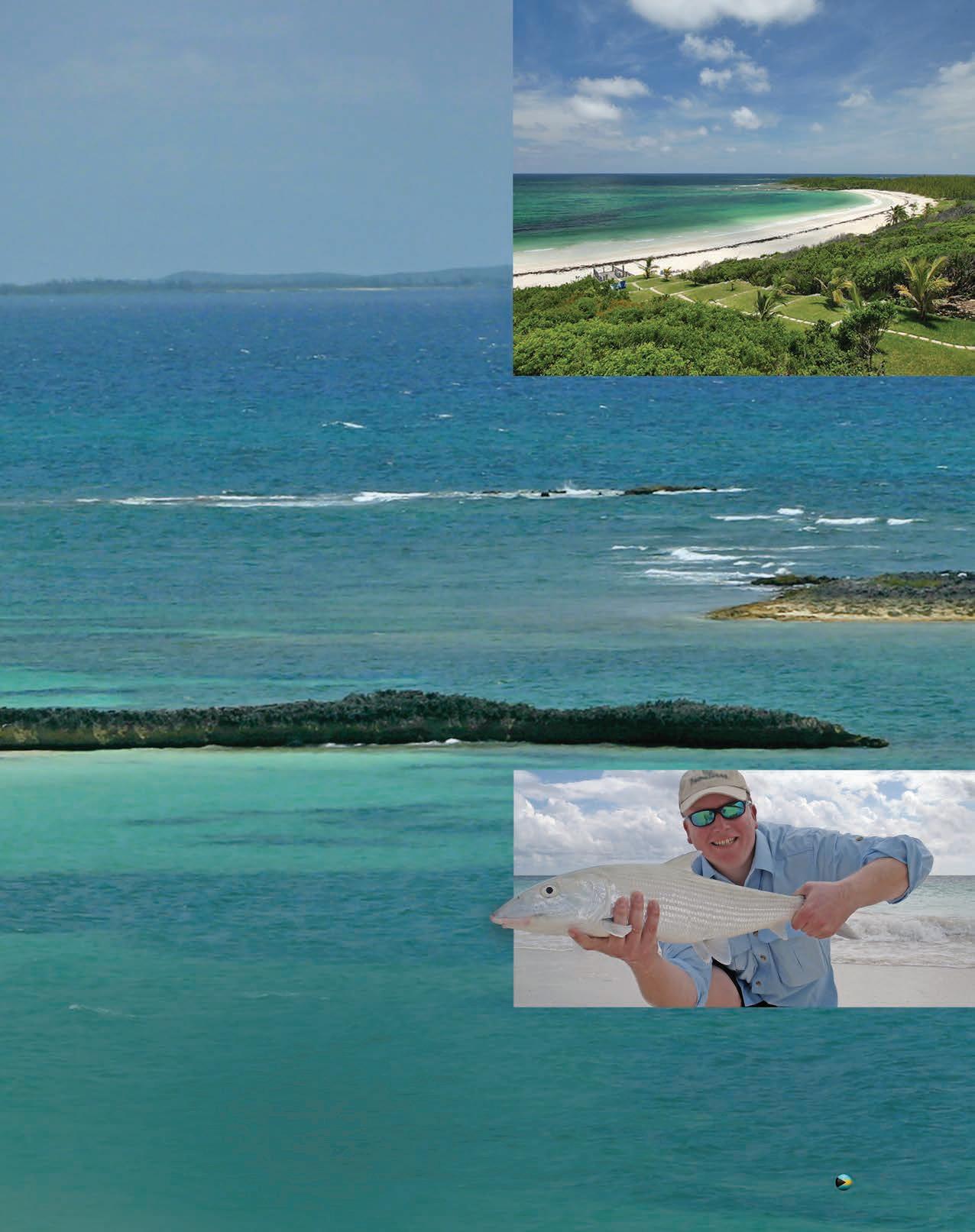
fishing flats. The area is a massive complex of islands, channels and flats that are home to more bonefish than are imaginable. Still within striking distance are the classic, white-sand flats of Sandy Point, Gorda Cay, Moore’s Island, and Cross Harbour. This is bonefish country at its best, with shots at permit and the occasional juvenile tarpon as well.
s 7 night/6 day dbl occ angling package $7,990 Stays can be tailored for as many nights as requested.
www.theflyshop.com s phone 800-669-3474 63
Delphi Club photos
Saltwater fly fishing destinations best suited for Couples & Families
Nowhere in the Caribbean offers more fly fishing lodges that do a great job of catering to angling couples, families and non-fishing companions than the Bahamas. The staff here at The Fly Shop® are experts at creating angling holidays that can fulfill a memorable combination of interests.
OVER THE COURSE of the last forty five years, The Fly Shop® has orchestrated hundreds of holidays to fly fishing destinations that include variety and activities which expand the concept of vacation for couples who both fish, and anglers with non-fishing companions or kids who would rather watch paint dry than pick up a fly rod.
We’ve got places with amazing snorkeling, SCUBA diving, world-

Swain’s Cay Lodge is a boutique resort situated on a white sand beach at Mangrove Cay, Andros Island, Bahamas. It’s a full-fledged bonefish lodge that will satisfy any serious saltwater fly fisher and a perfect retreat for non-anglering couples and families. Guest accommodations are tastefully decorated and provide every tropical comfort imaginable. The airconditioned rooms, suites, and garden apartments are close to the beach and all feature private bathrooms with hot showers, queen-sized beds, high thread count linens, Wi-Fi and private patios. The resort oozes a festive, intimate holiday atmosphere and the nightly watering hole, the Reefside Restaurant & Bar, is famous for its food, tropical drinks and a welcoming Caribbean feel. The beach is perfect for sunbathing, swimming, wading, sea kayaking, bonefishing, and snorkeling. There is also a small bird sanctuary a short paddle from the beach, and a blue hole perfect for snorkeling. There are bikes to explore the rest of Mangrove Cay and a quick taxi ride gets you to Moxey Town for shopping, nightlife and a taste of local culture.
class birdwatching, hiking, horseback riding, sea kayaking, biking, or cozy spots for someone who just wants to curl up in a chaise lounge with a good book and tropical drink while their best friend is off catching fish.
The common denominators at all these getaways include beautiful scenery, a variety of outdoor experiences, and fly fishing.
North Riding Point Club is a luxurious bonefish resort located on a gorgeous private beach, midway up the south side of Grand Bahama Island. It’s the Rolls Royce of Bahamian resorts, a perfect retreat for angling couples looking for an elegant and intimate Caribbean holiday.
The lodge features large open living and dining areas, an oceanfront veranda, a fully-stocked premium bar and a beautiful oceanfront freshwater swimming pool and patio. The beach-facing guest cottages have two queen beds, a table and chairs, A/C, ceiling fan, full bath, in-room mini bar, coffee maker, and a private screened porch. Nightly turndown service, complimentary laundry and an in-house concierge can arrange island excursions including snorkeling, kayaking, single and tandem paddle boarding, nature eco-tours, golf, horseback riding, tennis and trips to Freeport for a spa day, shopping, and visiting tourist attractions.
Everything about the “Club” – its fishing program, amenities, staff, food and guest services – is superb. Be it bonefishing, or a day on a private beach with your best friend, North Riding Point Club delivers.
H2O Bonefishing, Grand Bahama Island
Anglers and their friends or family are hosted at the lovely Pelican Bay Resort. It is a wonderful choice for anglers, couples or families, but make no mistake, their bonefishing is as good as it gets. These popular, flexible packages include accommodations at Pelican Bay (one of the island’s finest resort hotels), breakfast, packed lunches, terrific guides, modern skiffs, and easy access to Grand Bahama’s world-class flats.
The resort location at Port Lucaya has three swimming pools, restaurants, a swell bar, and is within walking distance of the Straw Market (great shopping, restaurants and bars) and a fine golf course.
Fishermen and their family or friends can fashion their own after-angling dinner and alternative guest entertainment plans at any one of dozens of nearby restaurants, boutiques, golf courses, casinos and renowned SCUBA operations.
Give us a call and we’ll find you some great fishing that can be combined with a line-up of non-angling activities that will make you a vacation-planning hero.
800-669-3474
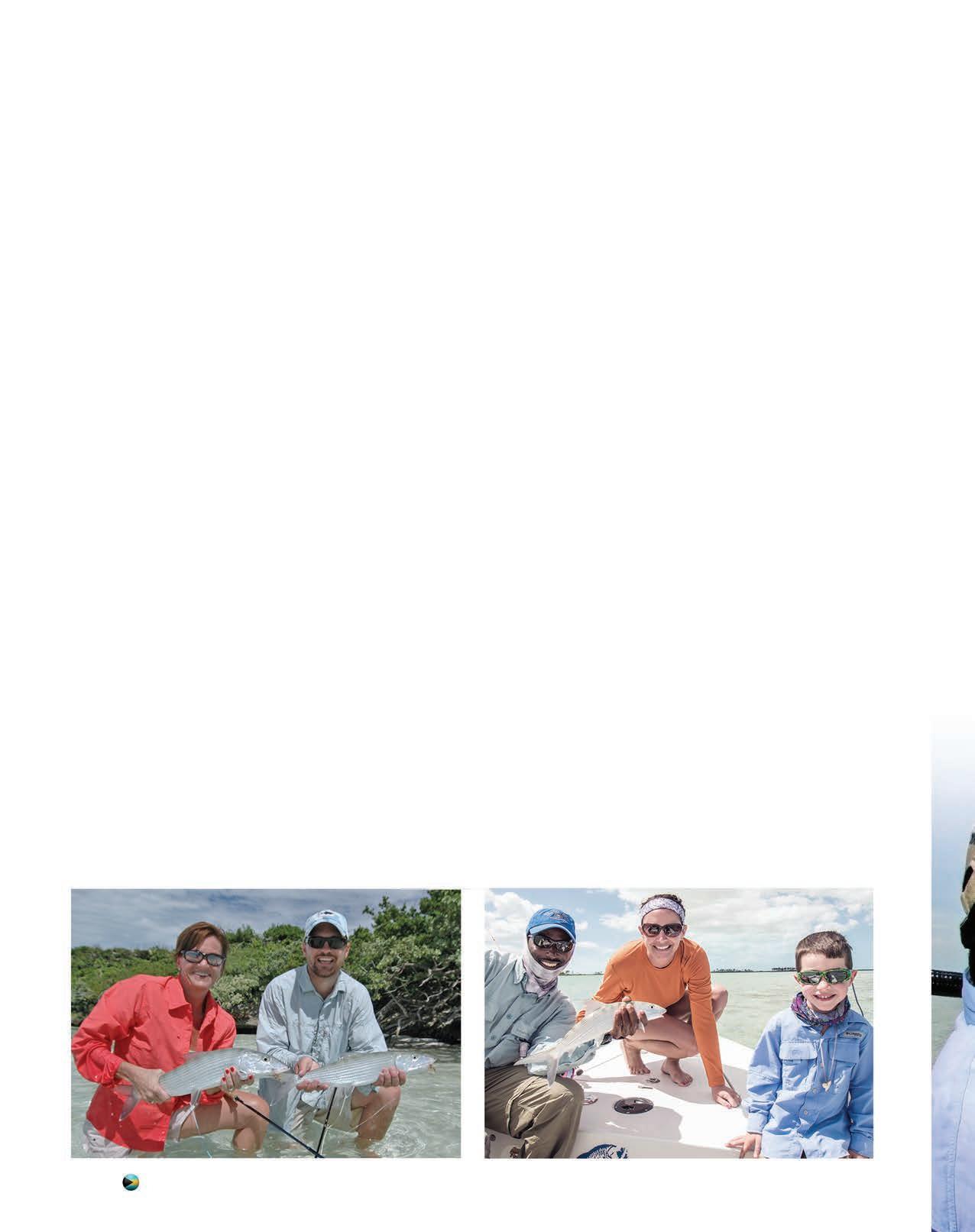
64 www.theflyshop.com s email: info@theflyshop.com
H2O Bonefishing photo Michael Caranci photo
COUPLES & NON - ANGLING
DESTINATIONS
Sunglasses for The Flats
Sunglasses are an absolutely critical piece of equipment for a successful flats angler. Flats fishing is all about SIGHT casting! If you cannot see the fish, you are wasting your time, and money.
THIS IS NOT AN AREA to cut corners to save a few bucks. Go big. Get the best pair you can afford, and have a back-up pair safely tucked in your drybag. Fishing a day, or week without a pair is not an option... and they don’t float. Consider putting some leashes on your expensive sunglasses, like those made by Chums.
It is most important to get a pair of sunglasses that best allow you to see the fish. The following are a few key features that are important to consider in order to achieve this most important goal.
Lens color. As a general rule, amber and copper tinted lenses are the best on the flats. Gray lenses are better for bluewater.
Polarized lenses are paramount on the flats, giving you x-ray vision to see into the water, instead of merely what’s on top. Polarized sunglasses are coated in a chemical filter. The filter works like the vertical slats of a fence, not allowing anything long and horizontal through its gaps. So when the horizontal wavelengths of glare try to pass through, they can’t reach your eyes. Polarized lenses help reduce glare as well as make colors and details appear sharper, both essential attributes when sight-fishing the flats.
Lens material is the next most important factor to consider. There are 2 options, glass or polycarbonate (plastic). Some people prefer the lightness they get from polycarb lenses, but you have to be extremely careful not to scratch them. One grain of sand and using your shirt to clear salt spray from the skiff run, and they are ruined, permanently. I can’t do it, it is impossible. Give me “glass” every time. I’ll deal with the weight on my nose when I can actually still see the fish I’m looking for through them.
Mirroring is also a great feature on sunglasses that you are going to use stalking tailer’s. Mirrored lenses cut down extreme glare common on the flats. While not as important for many freshwater applications, you will appreciate mirrored lenses on a bright sunny day in the Caribbean.

Frame choice is a very personal decision. Everyone’s face is shaped differently. Frames that I love might slip right off of your face, and frames that you love might put huge pressure behind my ears! You want to get a frame that fits YOU perfectly, something that fits snuggly and is stable on your face, but doesn’t pinch the bridge of your nose, or put pressure behind or over the ears. You also want to make sure you are not getting a lot of direct light coming around the frame into your eyes – called “light leakage”. Get a pair that wraps a little better and keeps out stray light. You definitely need some air flow, though, so they are not constantly steaming up. You also do not want to have a bunch of the frame visible to your own eyes when wearing them. This is very distracting, and restricts your view. Try on a bunch of different frames until you find the right one for you.
The options are endless and finding the perfect pair is a lifelong hunt, just like flats fishing itself…Costa Del Mar, Smith, Oakley, Maui Jim, and Breakline, among others, all make fantastic high-end sunglasses for saltwater angling. I have fished with most of them and, at the moment, my favorites are Costa Del Mar 580g Green Mirror lenses on Reefton frames. Comfortable, durable and I can tell what color a permit’s eyes are at 100 yards. Give us a shout and let us help find the perfect pair of x-ray goggles for you, too!
Justin Miller justin@theflyshop.com


www.theflyshop.com s phone 800-669-3474 65
H2O Bonefishing photo
Andros South photo
Scan this code for our sunglasses selections available from our online store
Essential Flies for the Bahamas
IF YOU HAD TO bring one fly for the Bahamas, it would have to be a handful of different size McVay Gotchas. It would be hard to not mention the “Crazy Charlie”, but for whatever reason, bonefish in the Bahamas love Gotchas.
Too many times we have had a guide look in our fly boxes and pluck out a heavily-dressed #2 Gotcha, saying, “Try this one, mon, it works every time”. Below is a list of essential Bahamas flies that we suggest you don’t leave home without.
to check out our complete selection of saltwater flies on our website at theflyshop.com
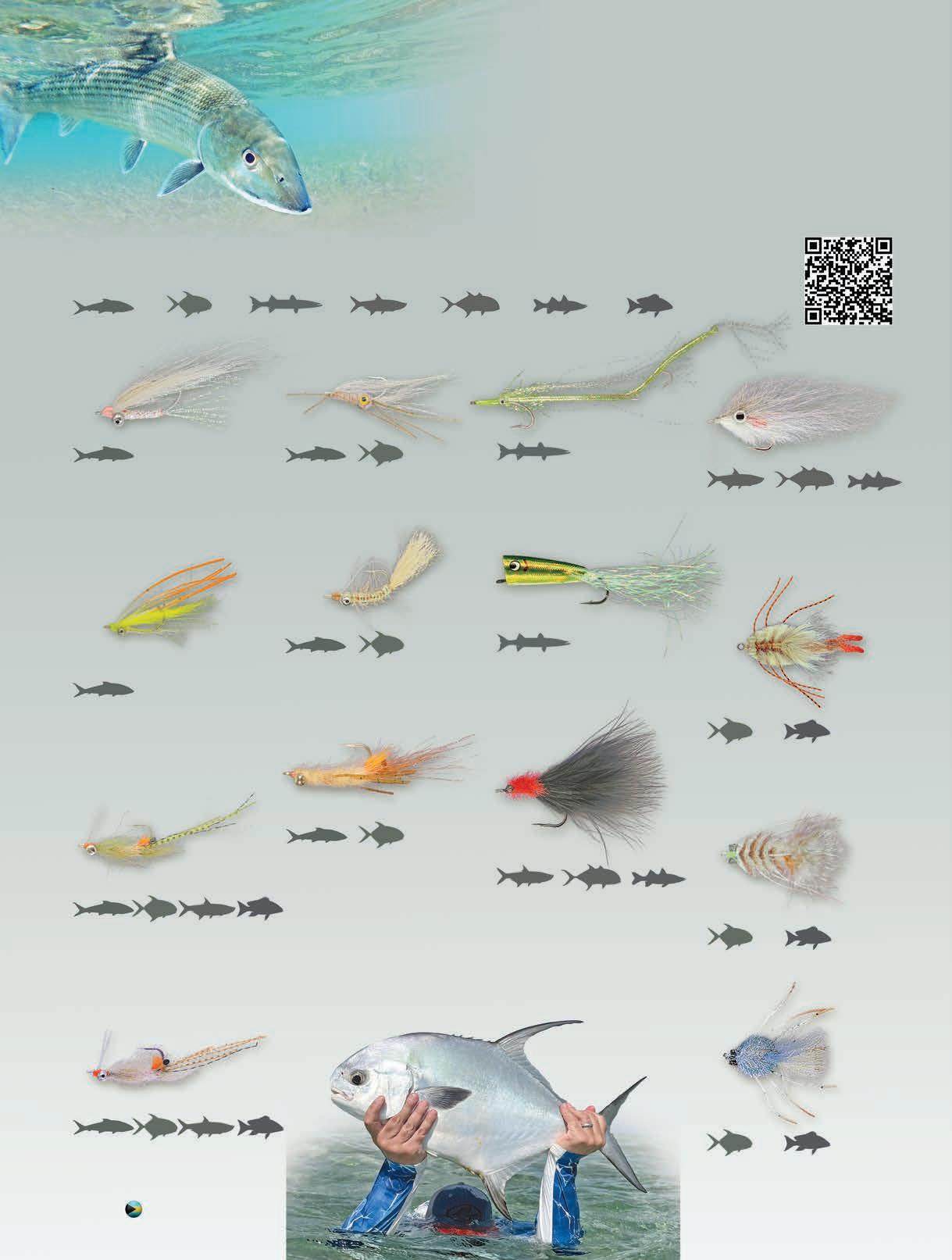
66 email: info@theflyshop.com
McVay Gotcha Size 2, 4, 6 $3.95 #266F Beck’s Lead Eye Sili-Legs Size 4 $4.95 #823FT Tan Enrico’s Lead Eye Spawning Shrimp Size 4 $8.95 #883F Tan Enrico’s Bead Chain Spawning Shrimp Size 4 $8.95 #209F Tan Tandem Cuda Fly Size 2/0 $7.95 #20F Pearly Poppers Size 2/0 (4.5 long) $4.95 #353FG Green/Yellow Tarpon Toad Size 1/0 $6.95 #896FC Chartreuse 896FR Red/Black 576FP Puple/Black 576FT Tan Puglisi Peanut Butter Size 2/0 $9.95 #374FC Chartreuse & White 374FB Black & Purple 374FG Grey & White Strong Arm Merkin Size 2 $9.95 #705FW White Fleeing Crab Size 2 $11.95 #566F Blue Crab Size 6 $11.95 #565F Squimp Size 6 $2.95 #517F Tan Miheves Flats Fly Size 6 $4.95 #124F Tan Spawning Mantis Size 2, 4, 6 $3.95 #993F Tan/Orange Be
Bonefish Permit Barracuda Tarpon Jack Snook Snapper Species for flies suggested Scan this code for our bonefish fly selections that are destination specific
sure
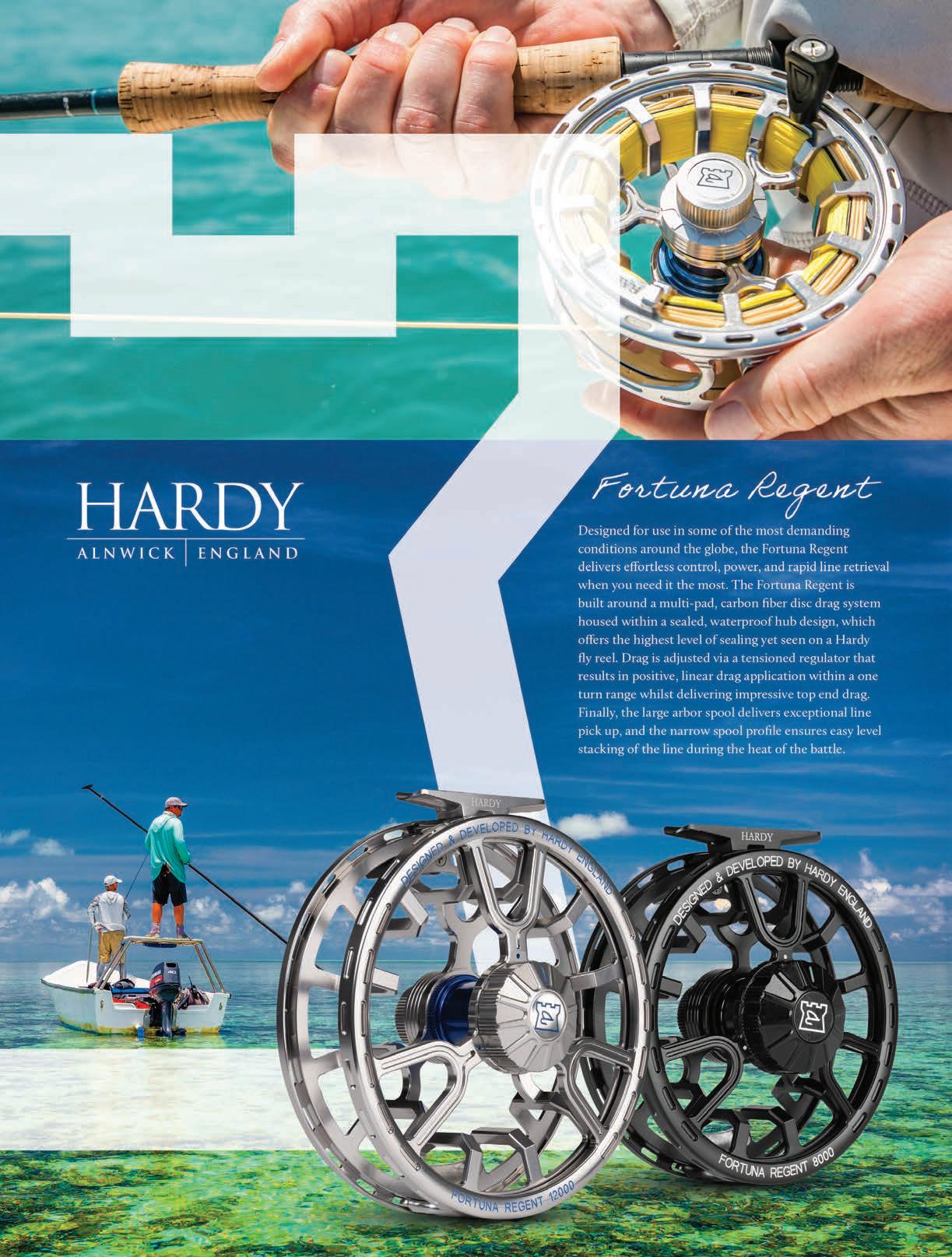
800-669-3474 www.theflyshop.com
4140 Churn Creek Road Redding California, 96002
Planning the next step
The key to a great fishing trip in the Bahamas is planning. It’s that simple. And there’s no one better able to point you in the right direction than the experts here at The Fly Shop®
The 68 pages of this magazine contain the best recommendations and information
The Fly Shop® has ever assembled about where and when to go in the Bahamas, and the proper gear you will need to be successful.

The perfect time to pull the trigger on your Caribbean fly fishing adventure, is right now. Securing prime dates is always best as soon after the current season as possible.
We’ve been helping fly fishermen with their saltwater travel plans for 44 years. In the process The Fly Shop® has built an unparalleled reputation for honesty, and customer advocacy. You have our word on that.
Give us a call today.
www.theflyshop.com/intro.html
Pre-sorted Standard United States Postage Paid The Fly Shop®, Inc. Printed in the USA © 2023 The Fly Shop®, Inc. All rights reserved. or current resident
to receive
Visit our website
our publications through the mail












 - Josh Hutchins, SA Ambassador
- Josh Hutchins, SA Ambassador



































































































































 Mike Michalak, 2023
Mike Michalak, 2023








































